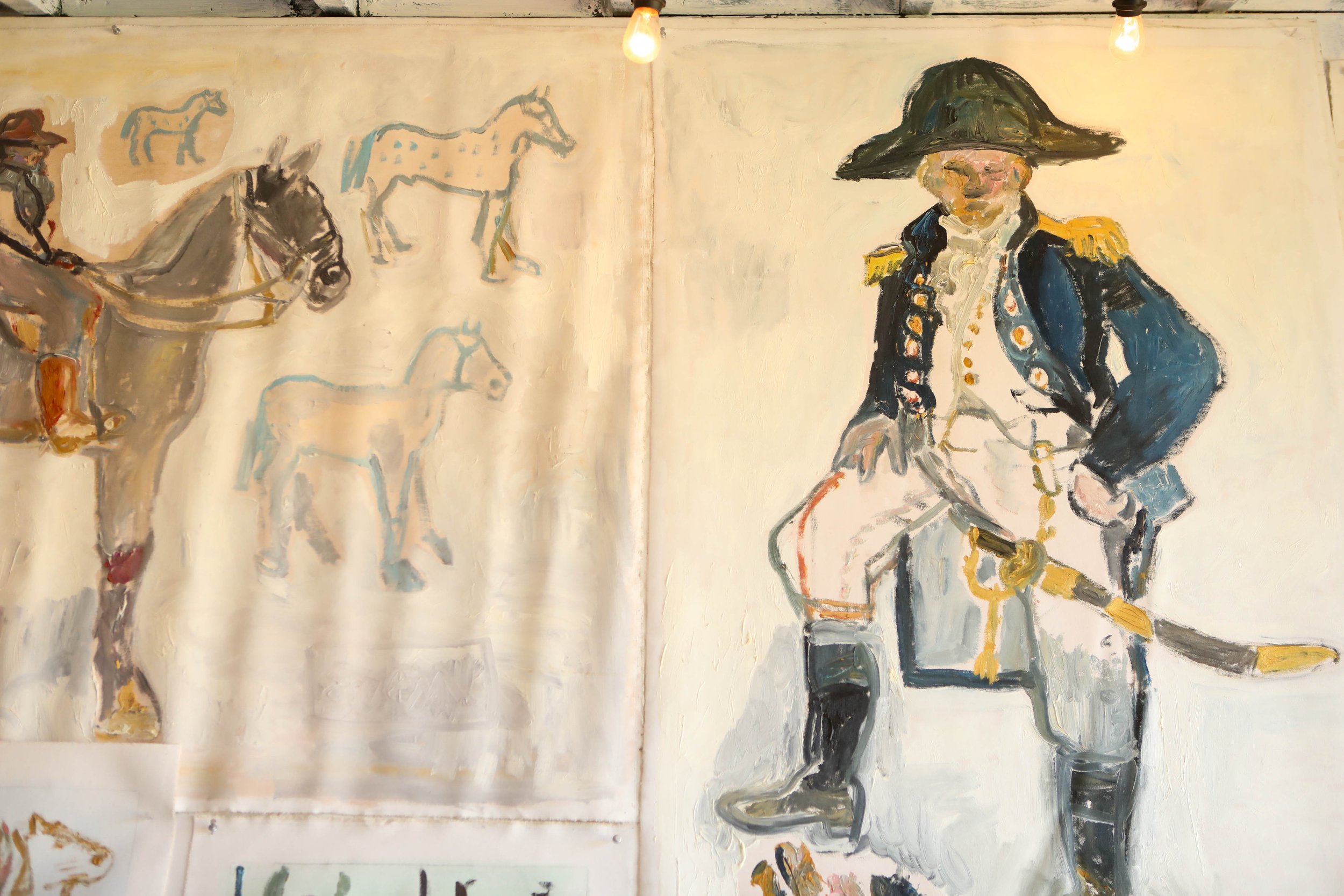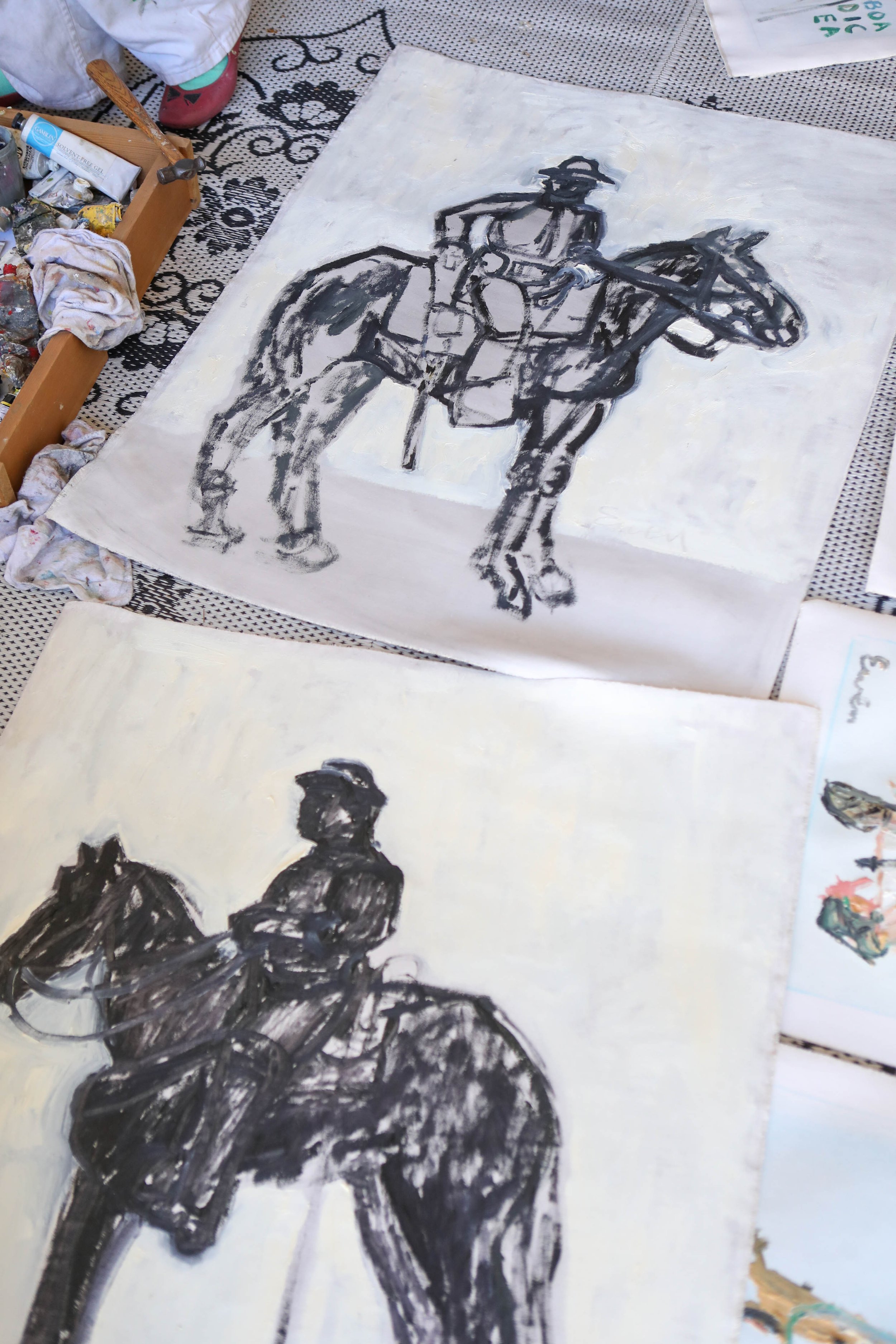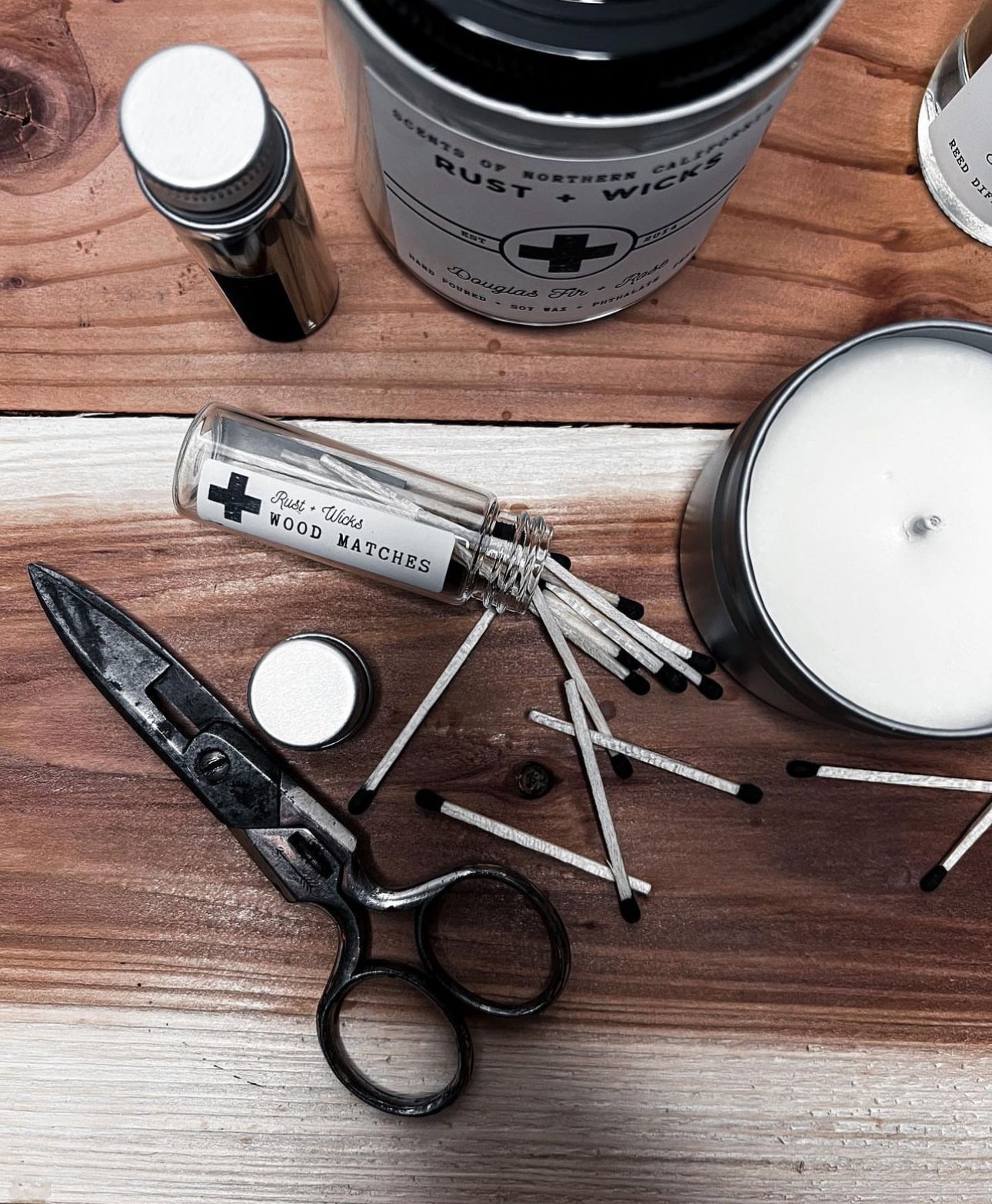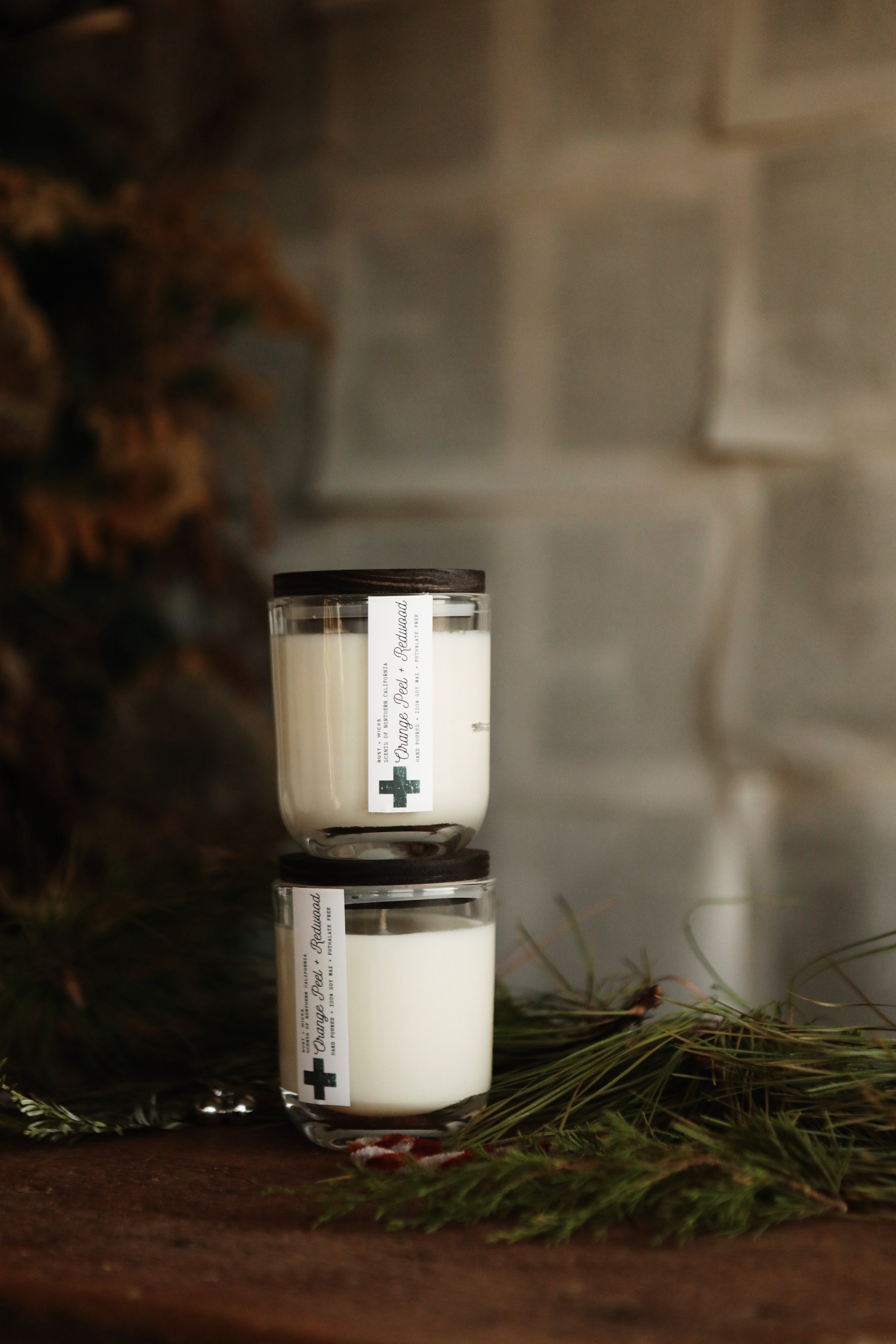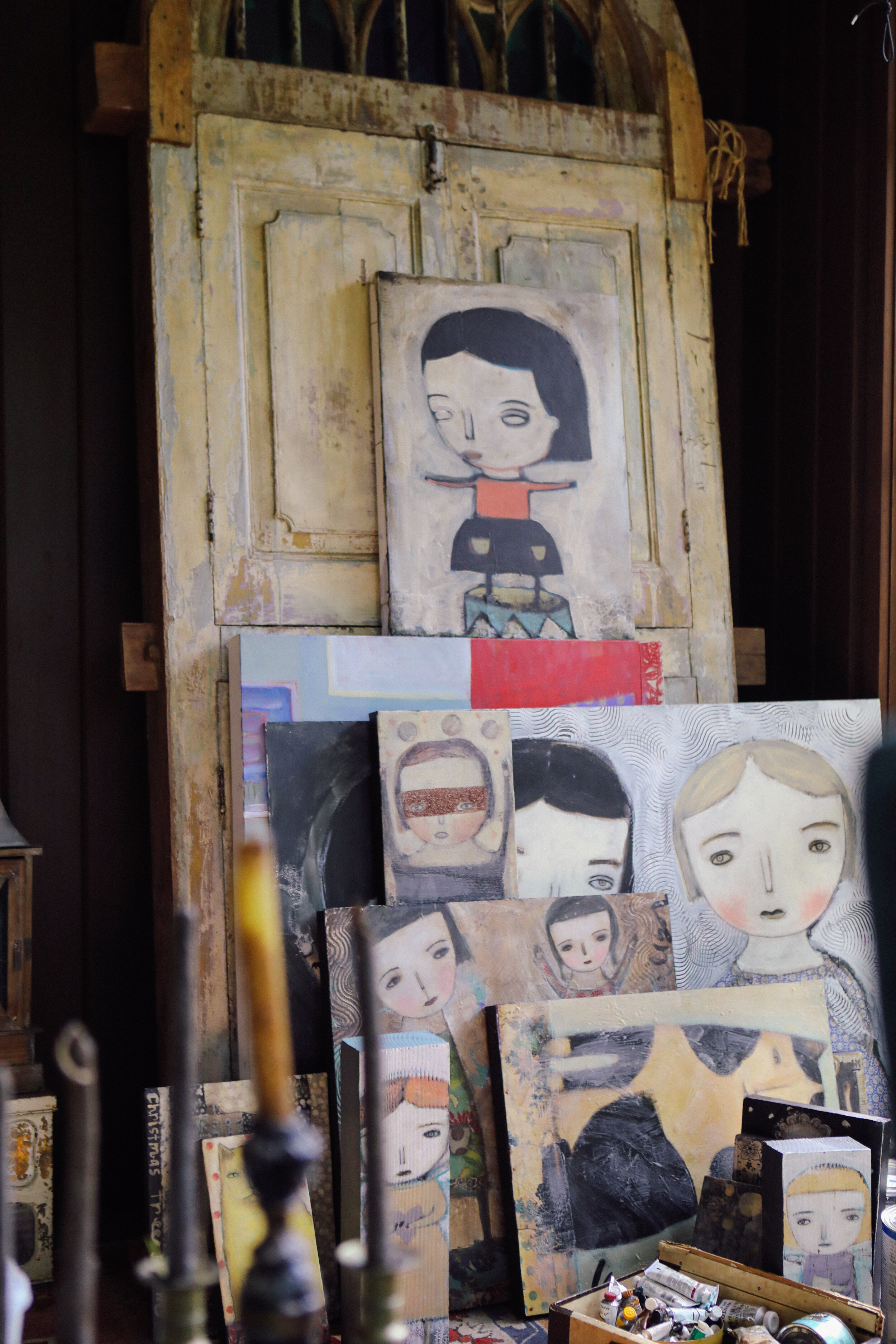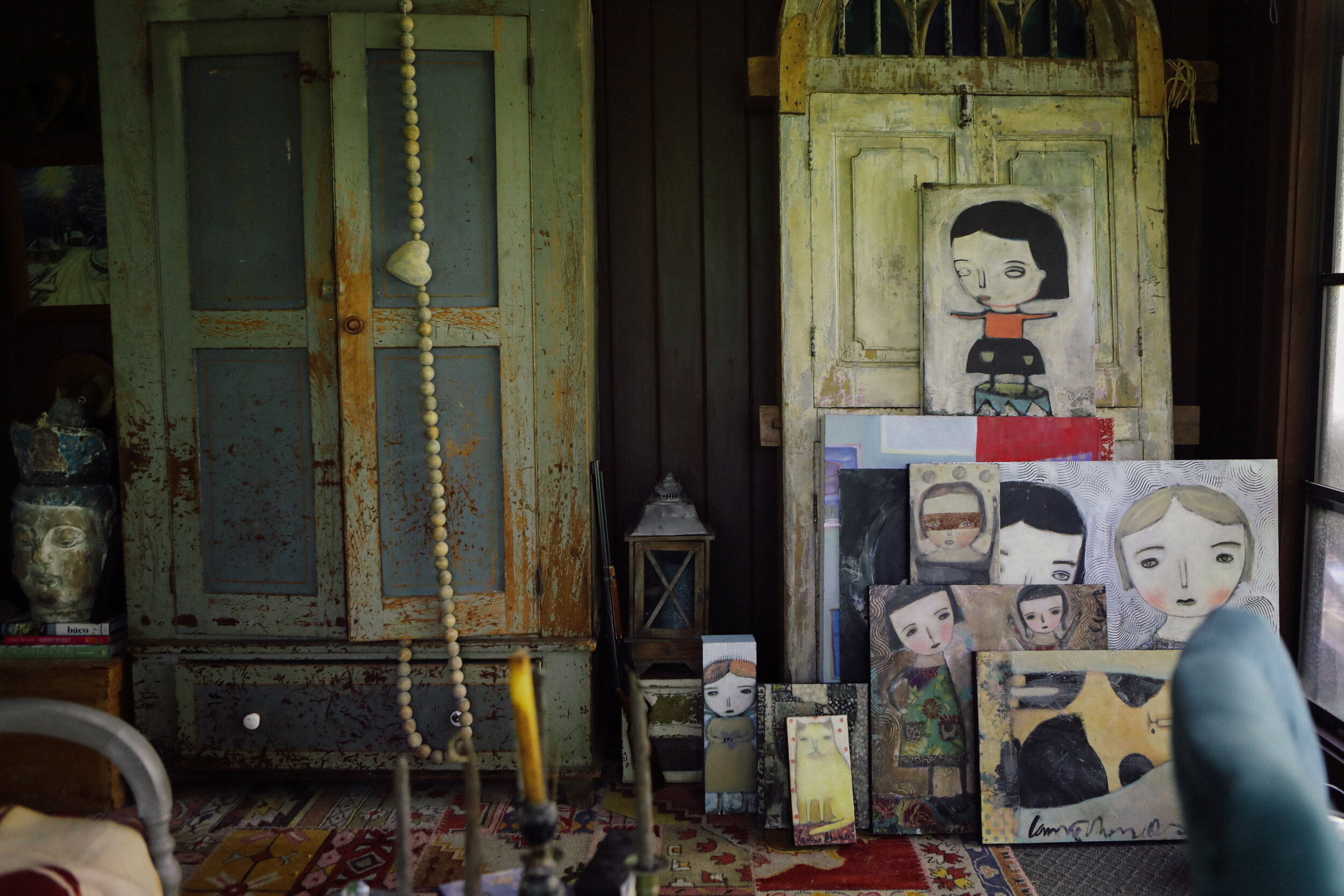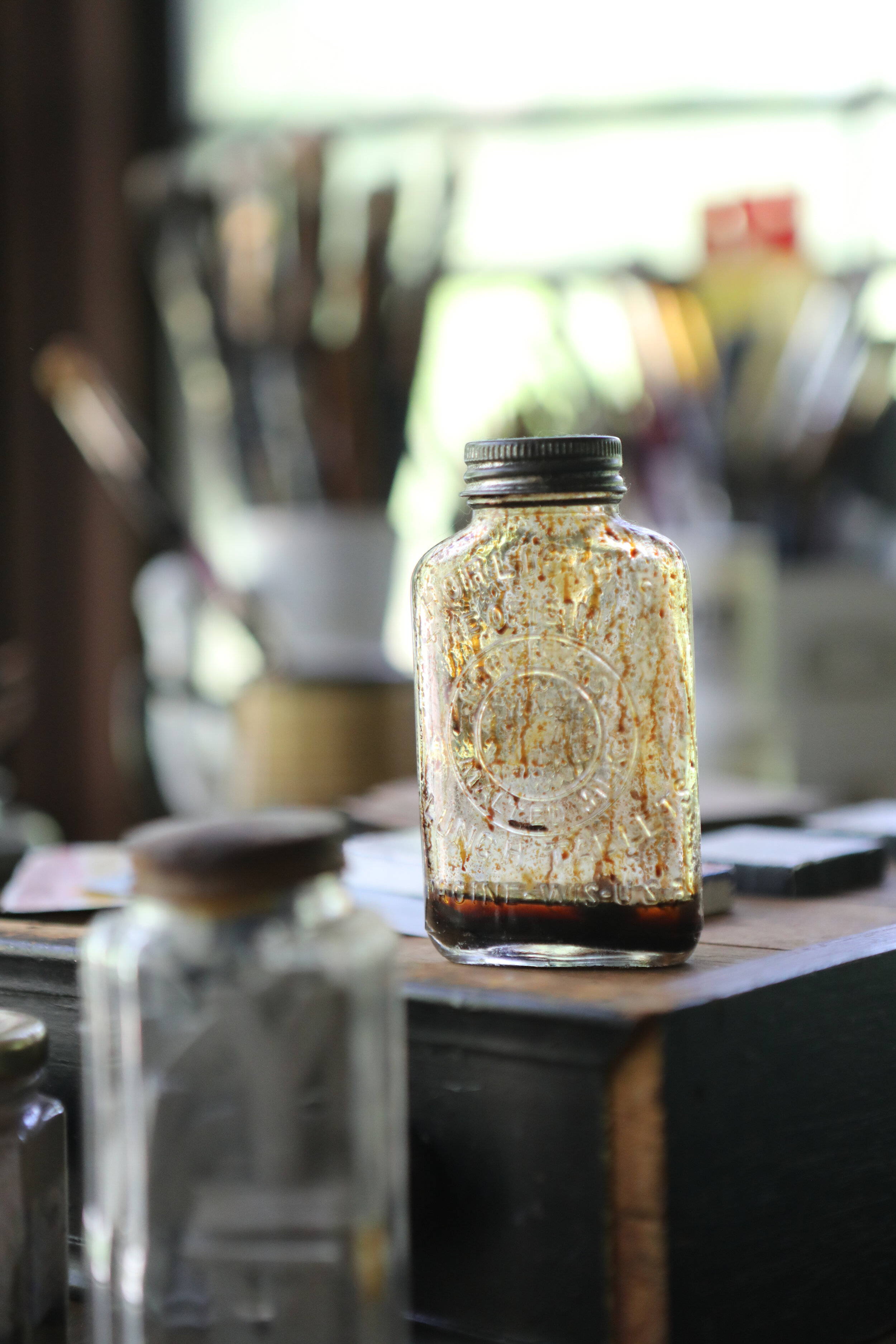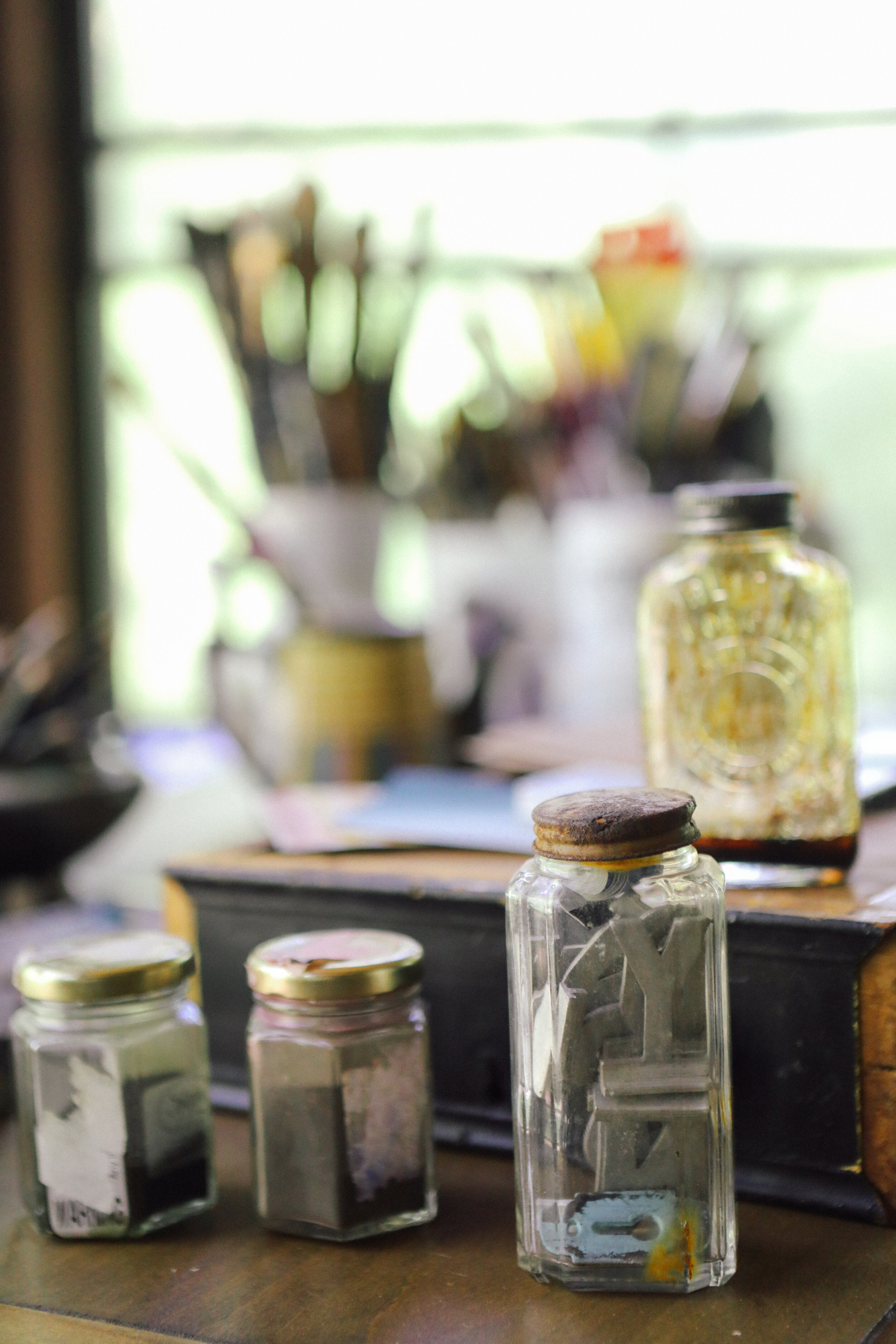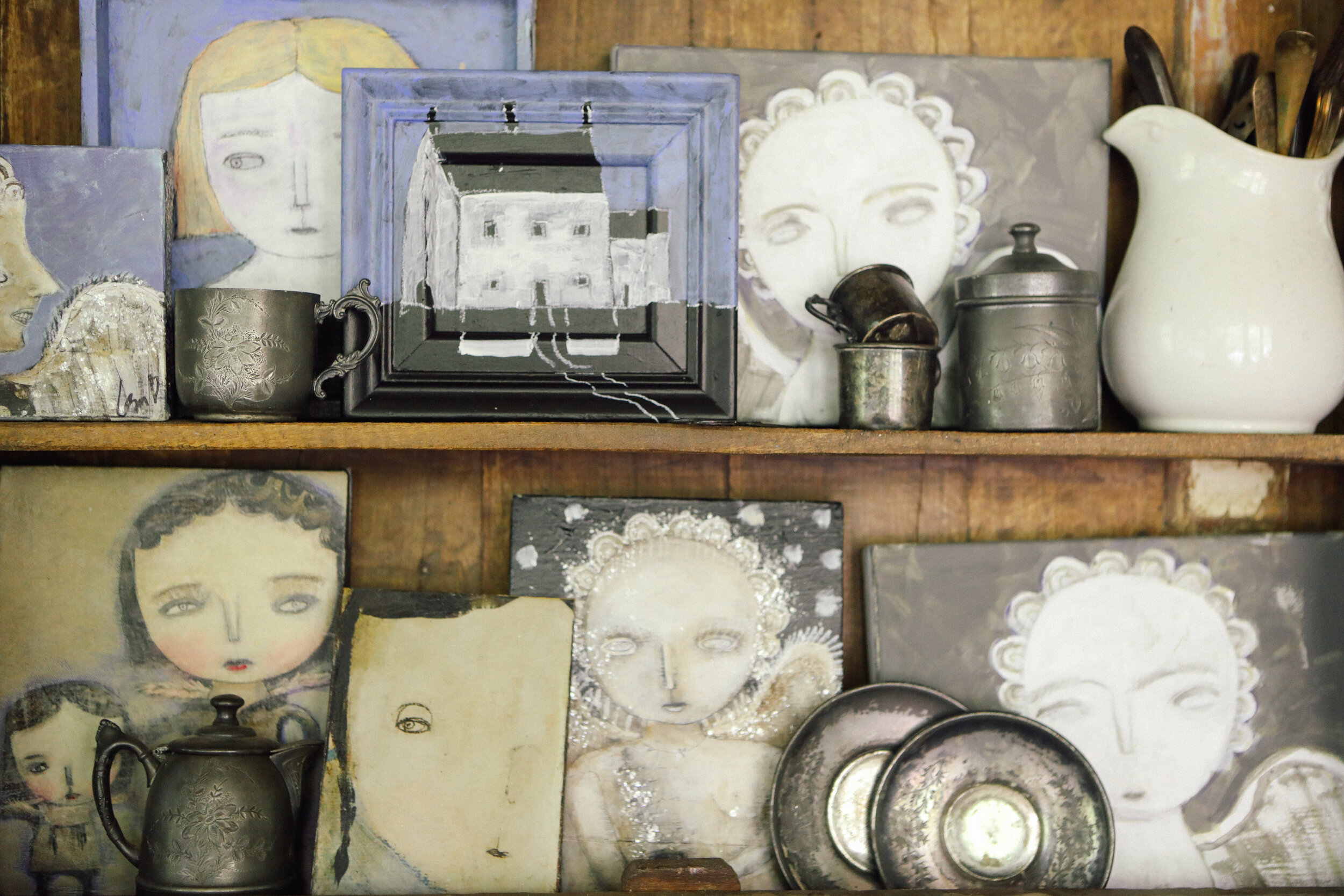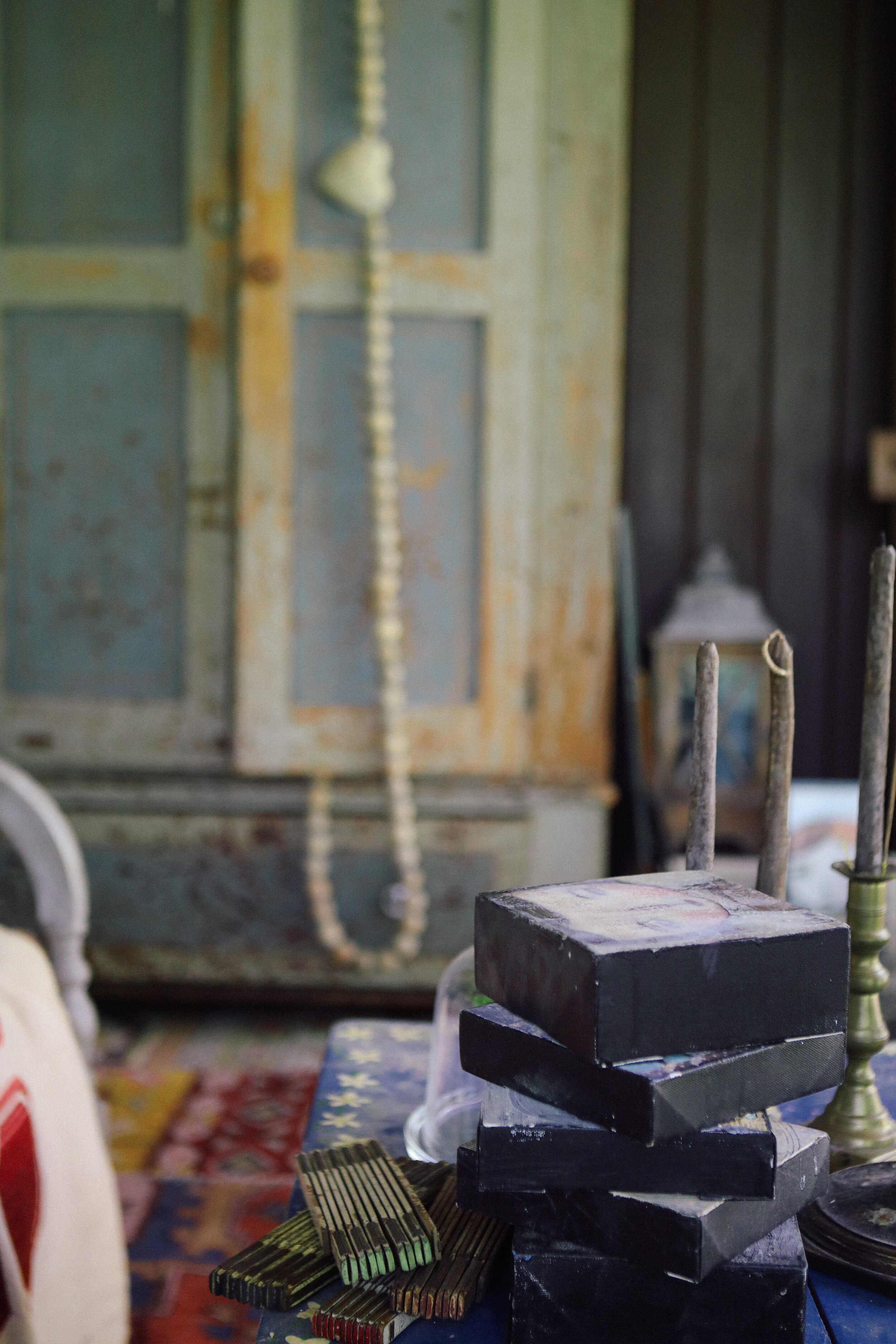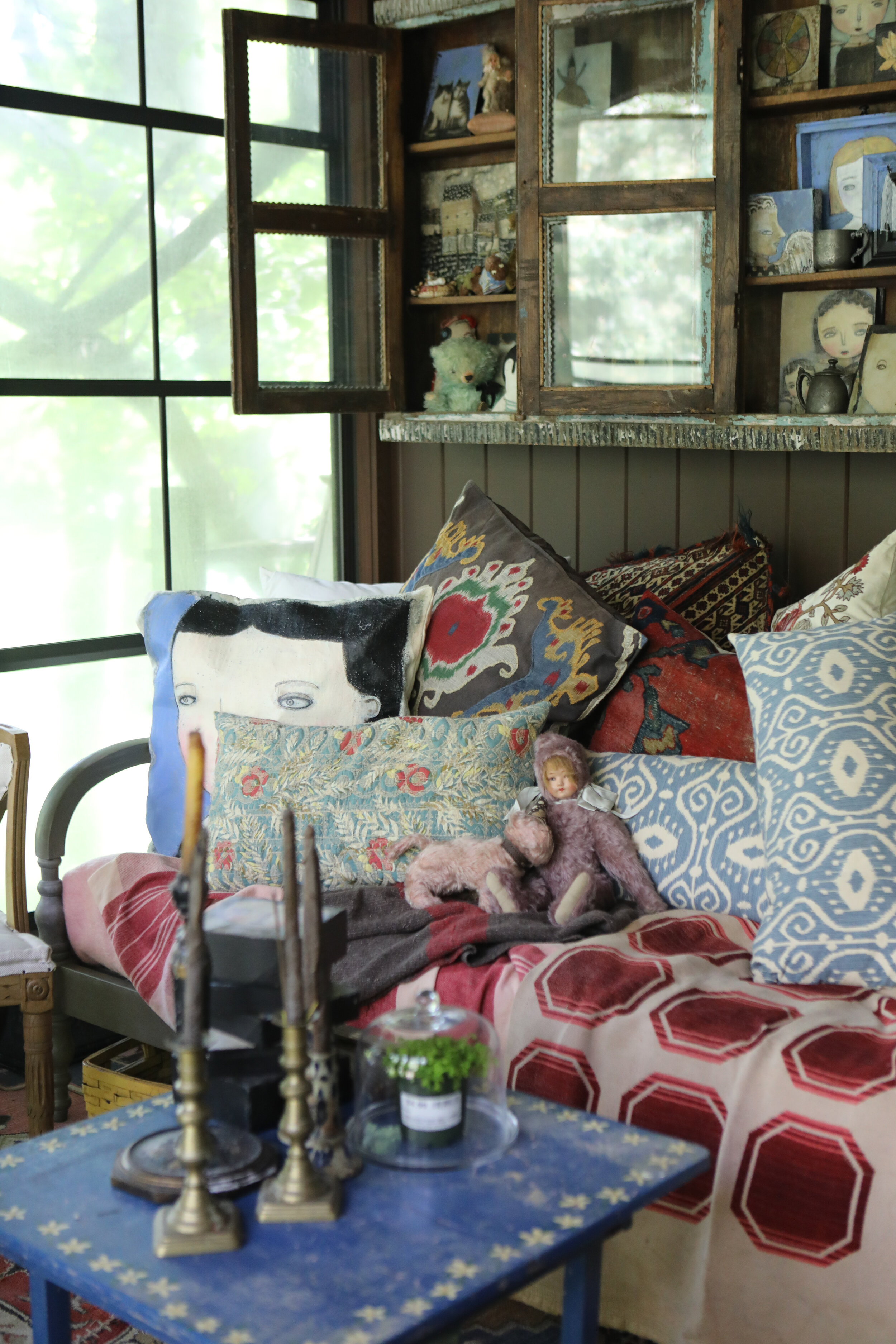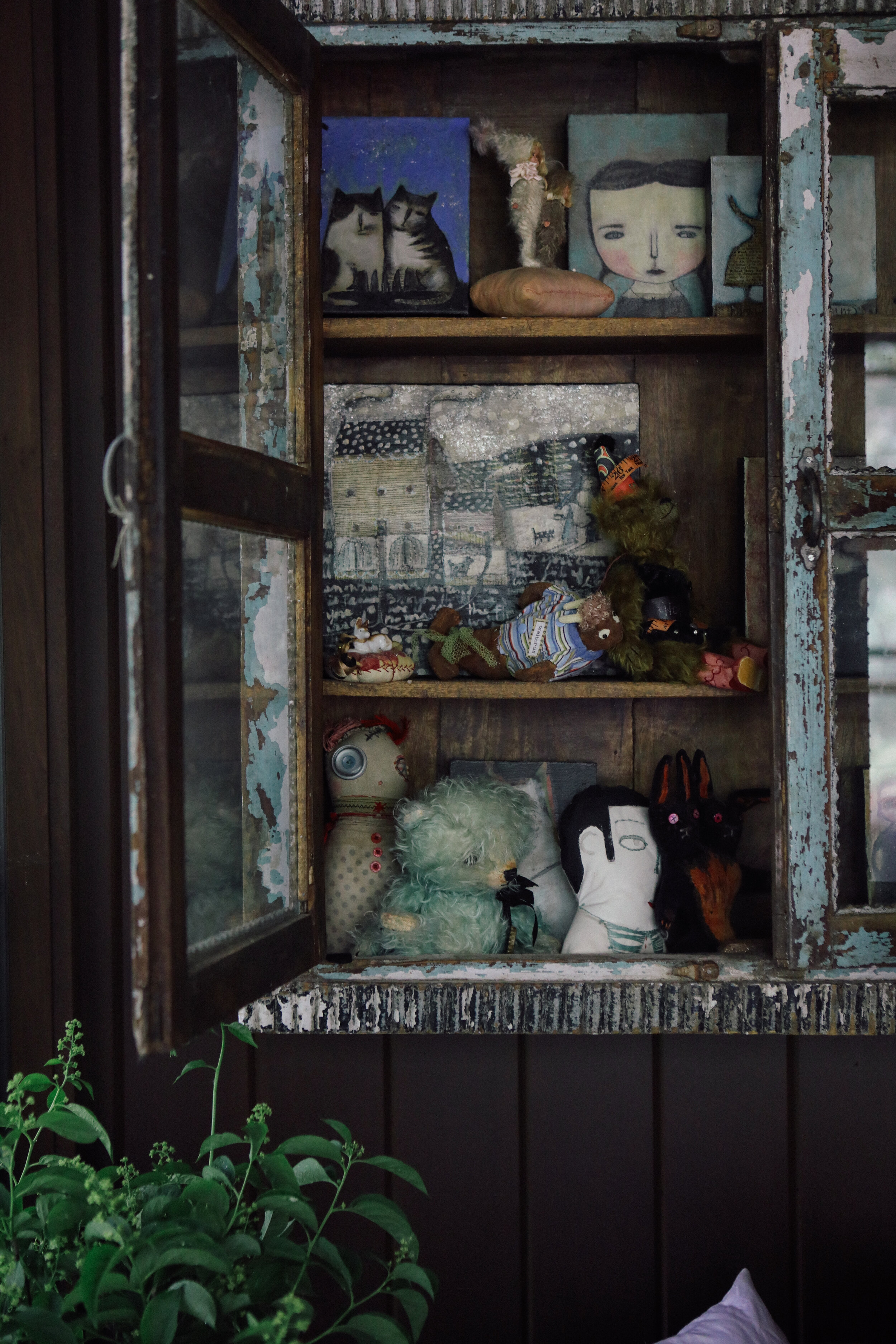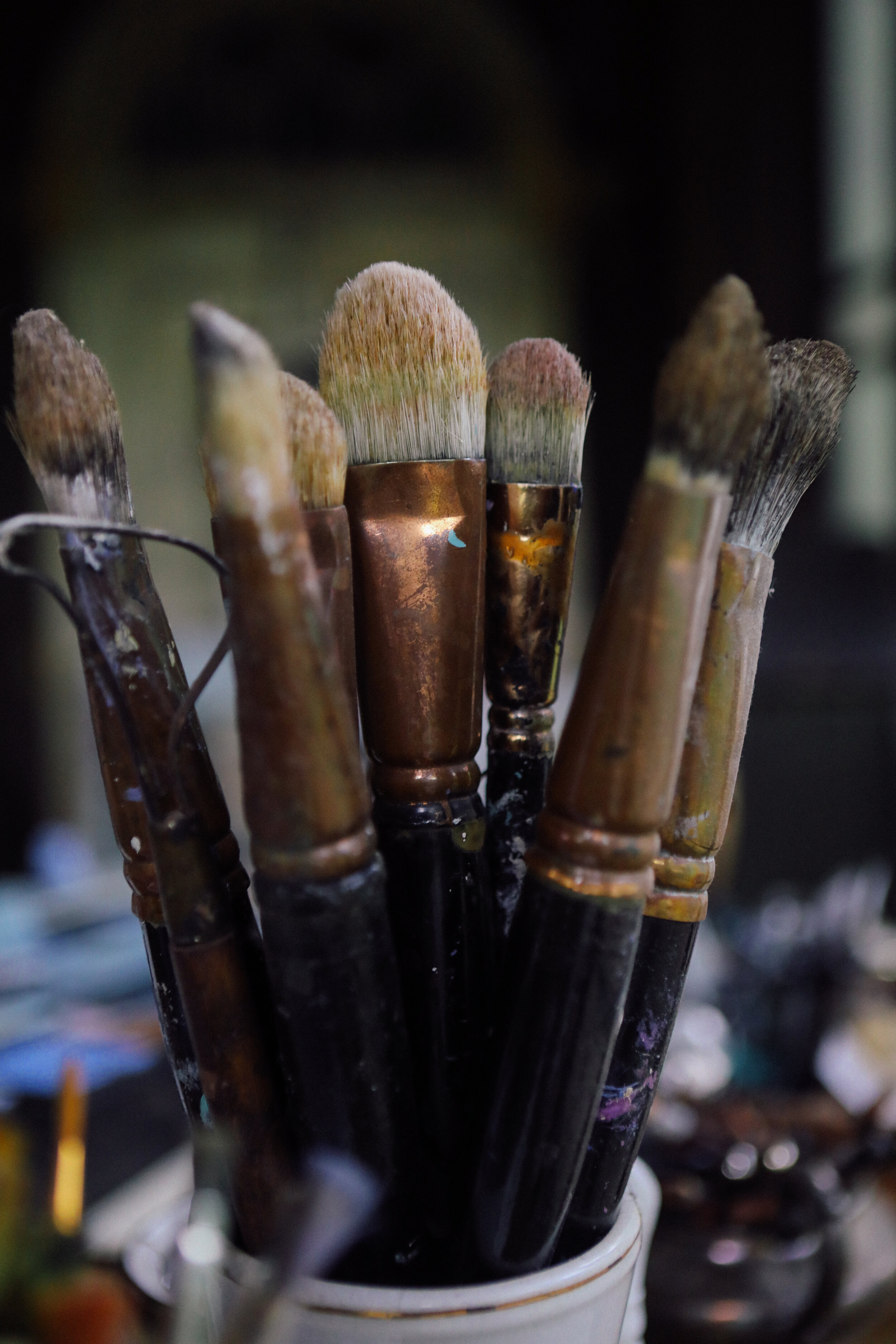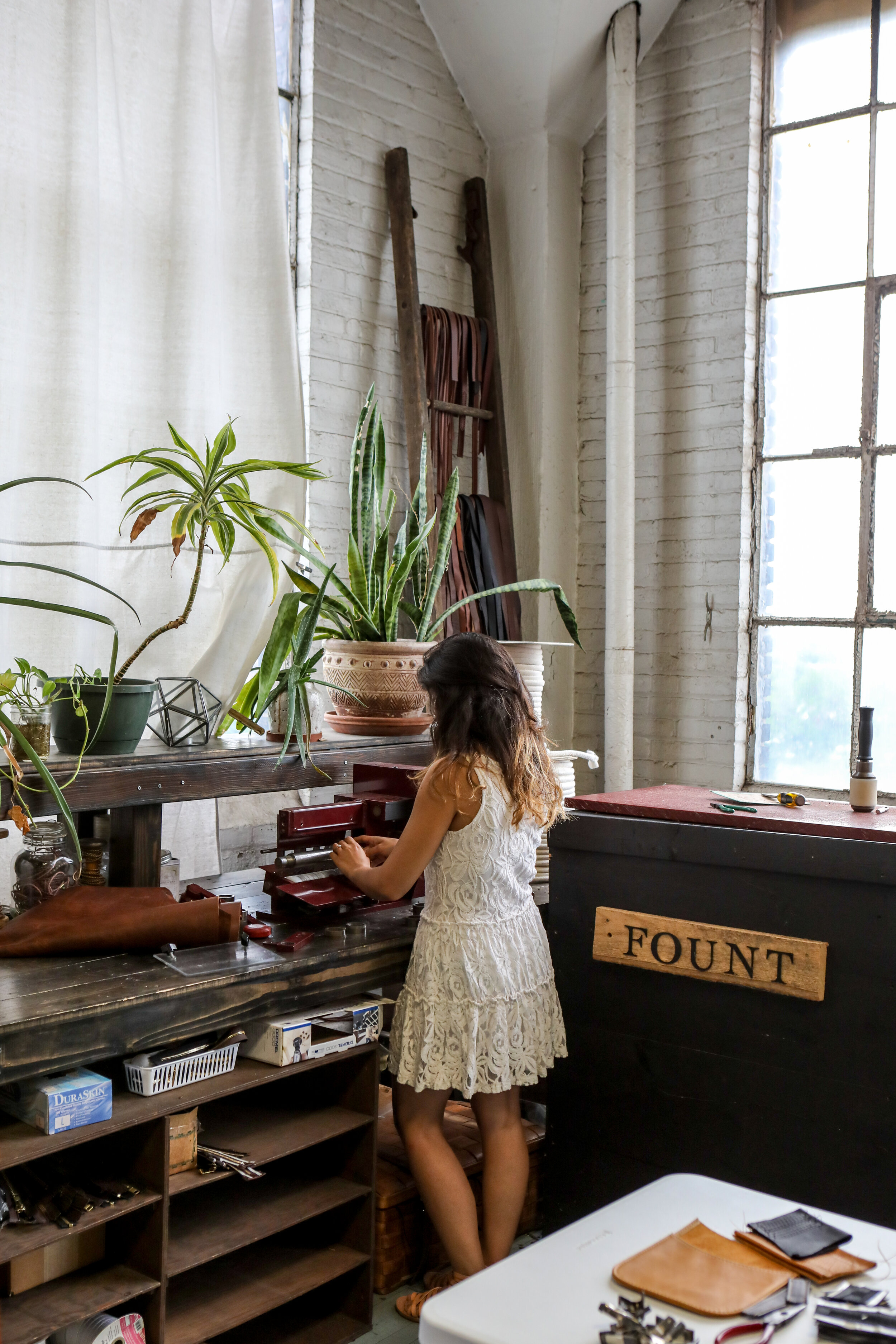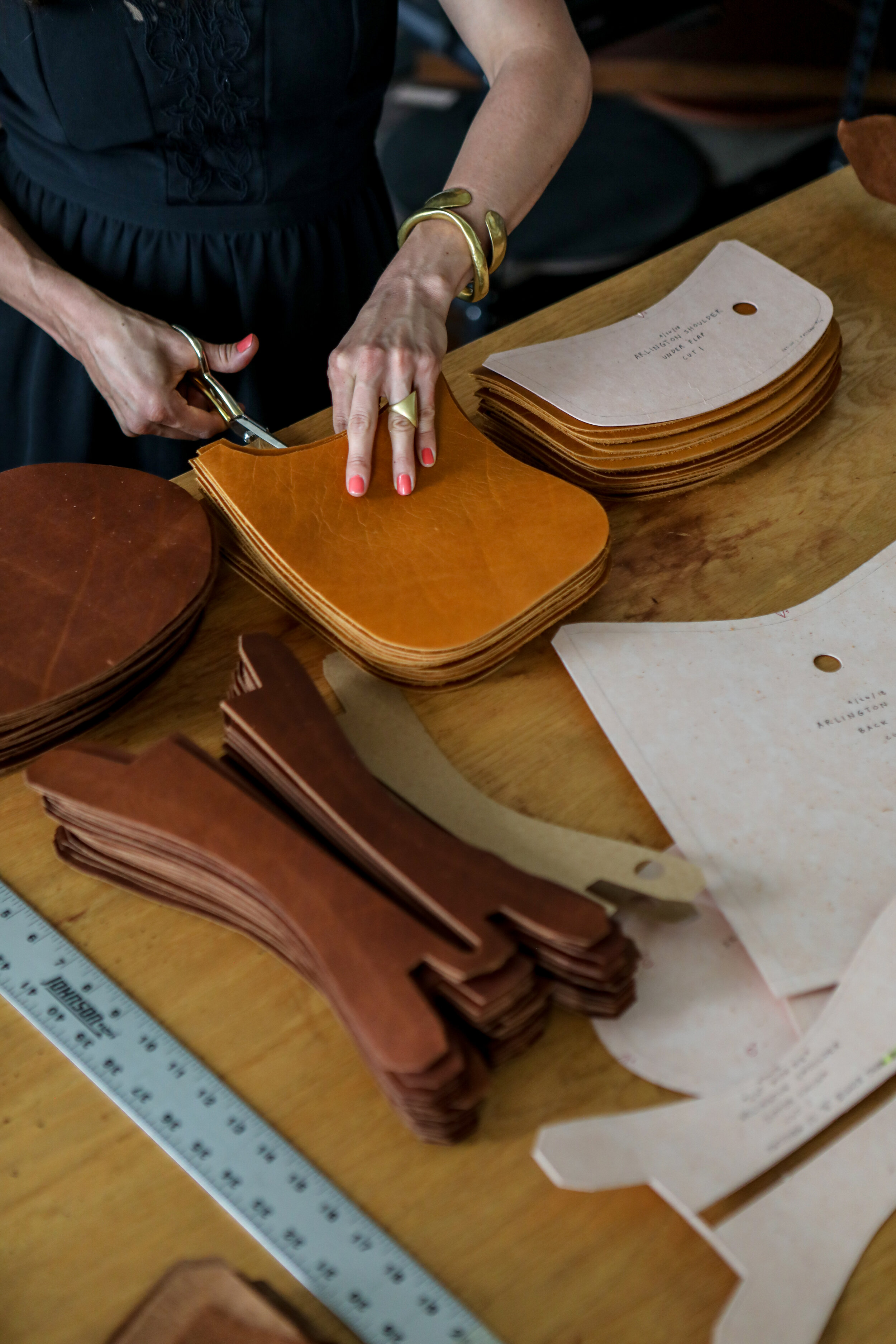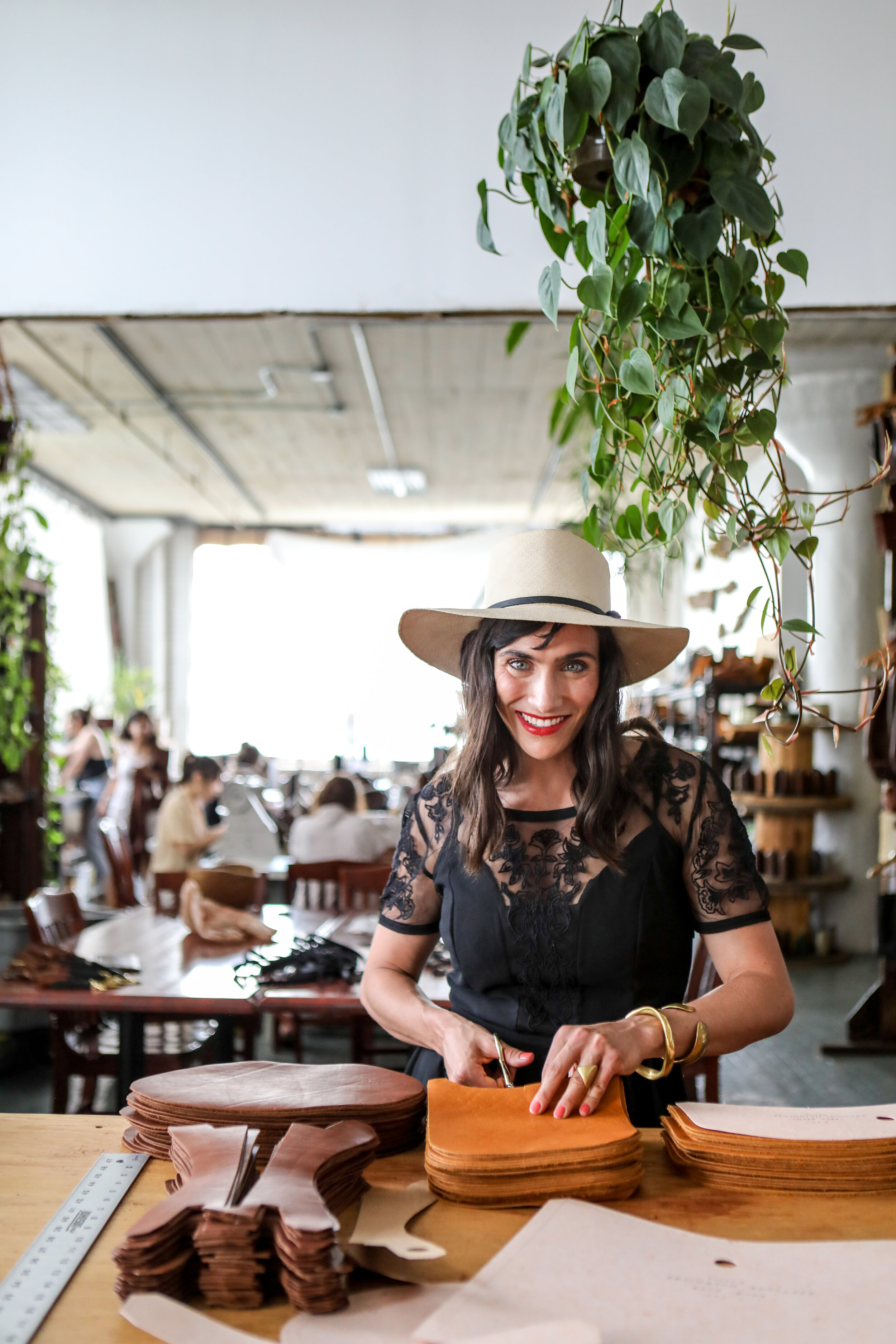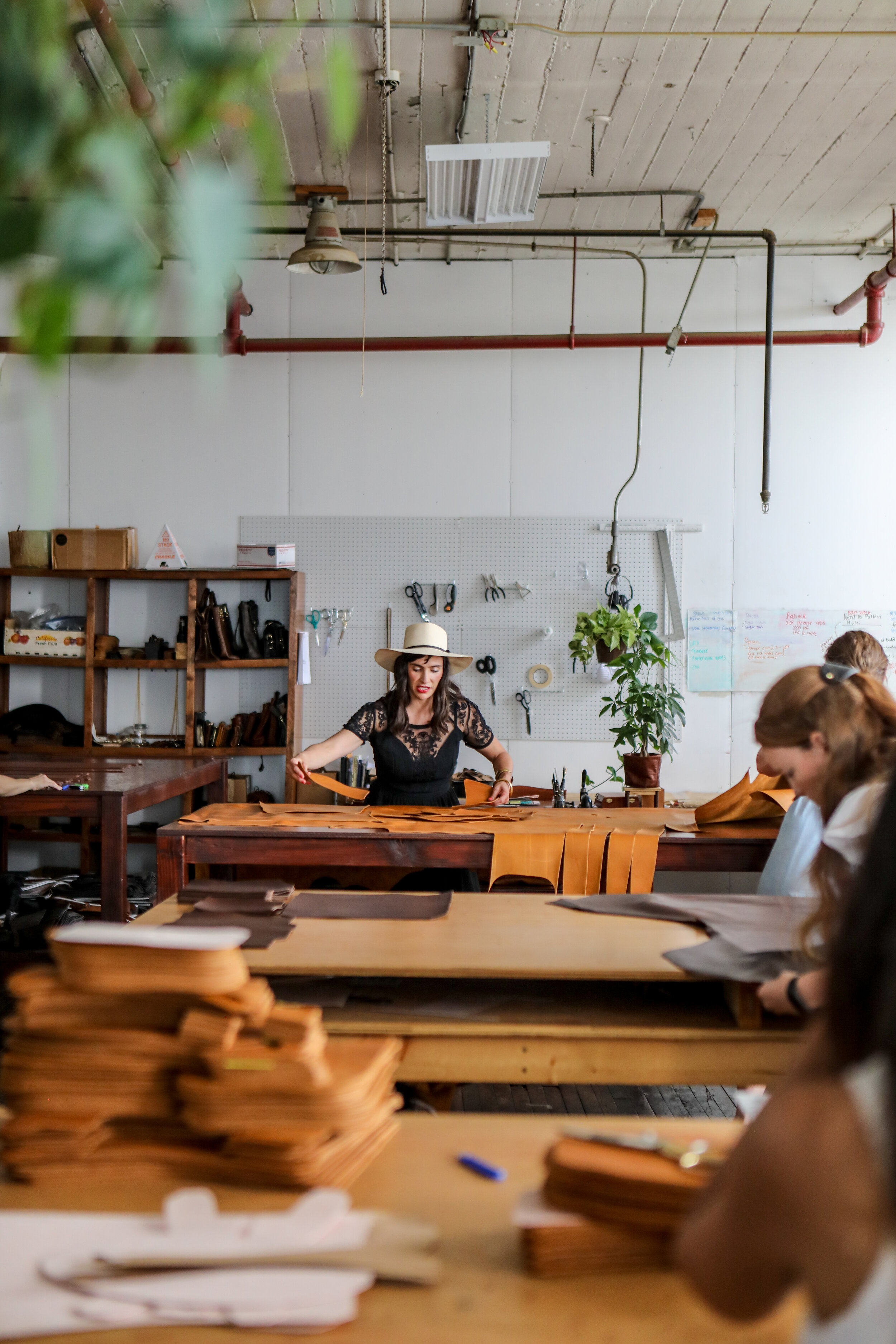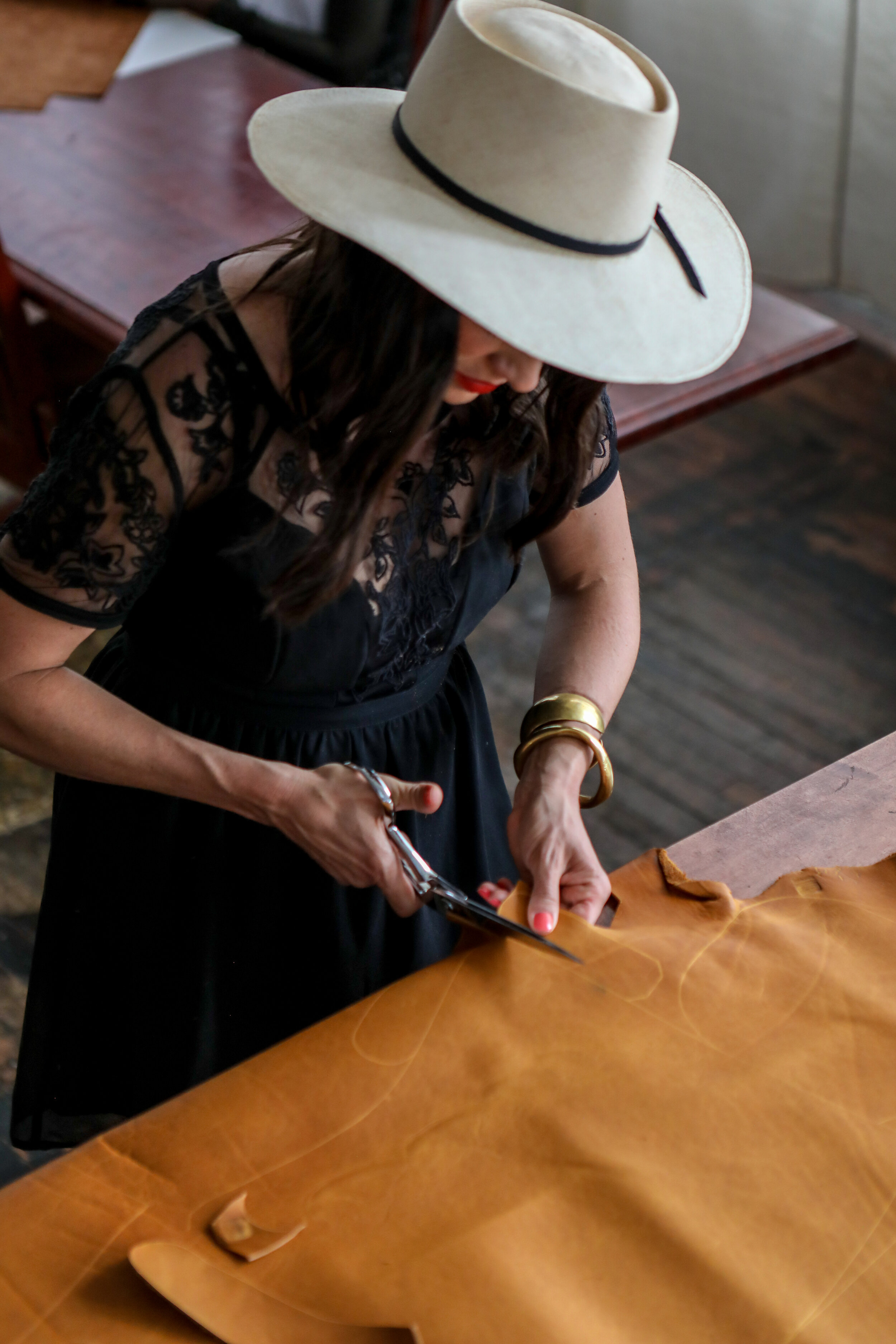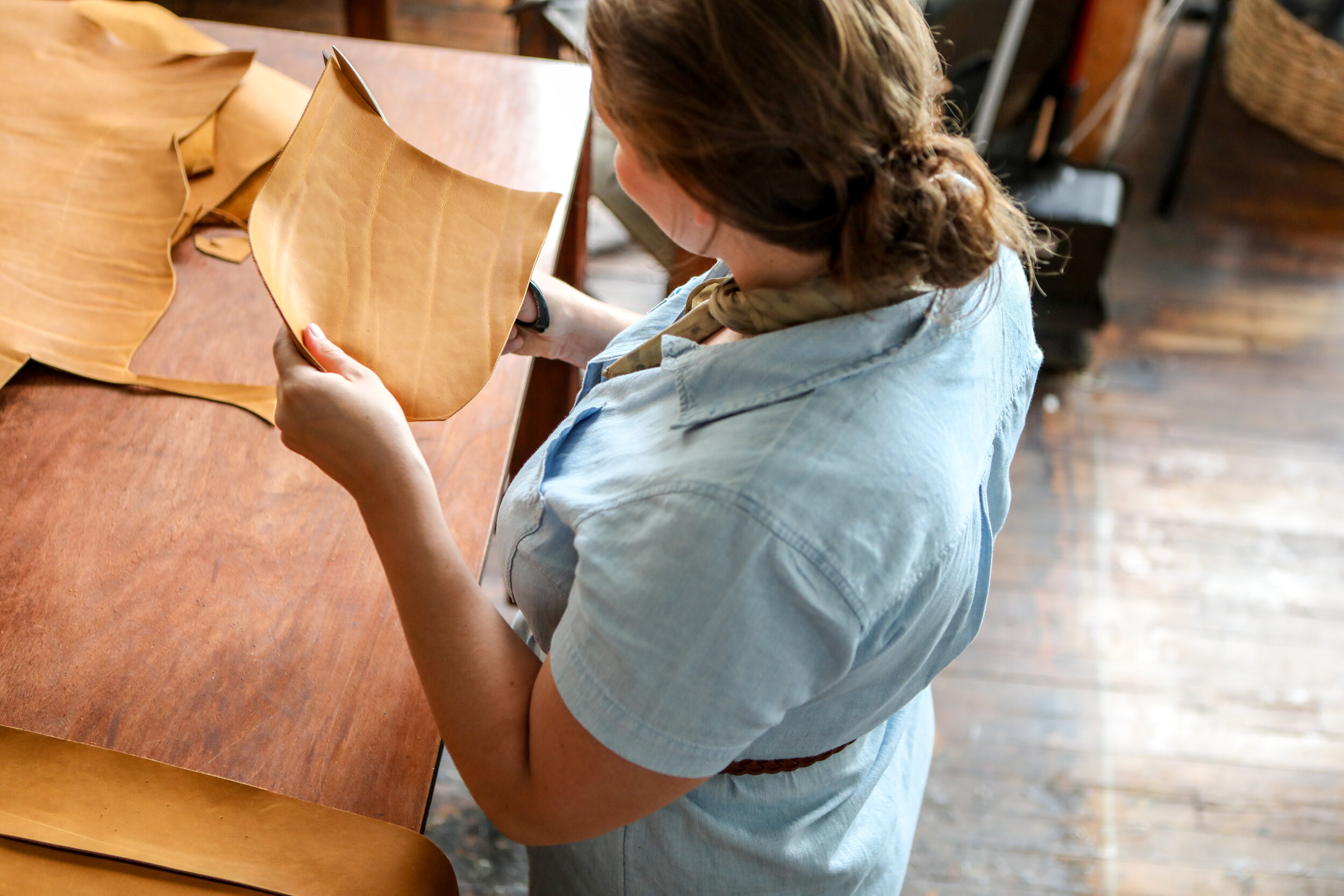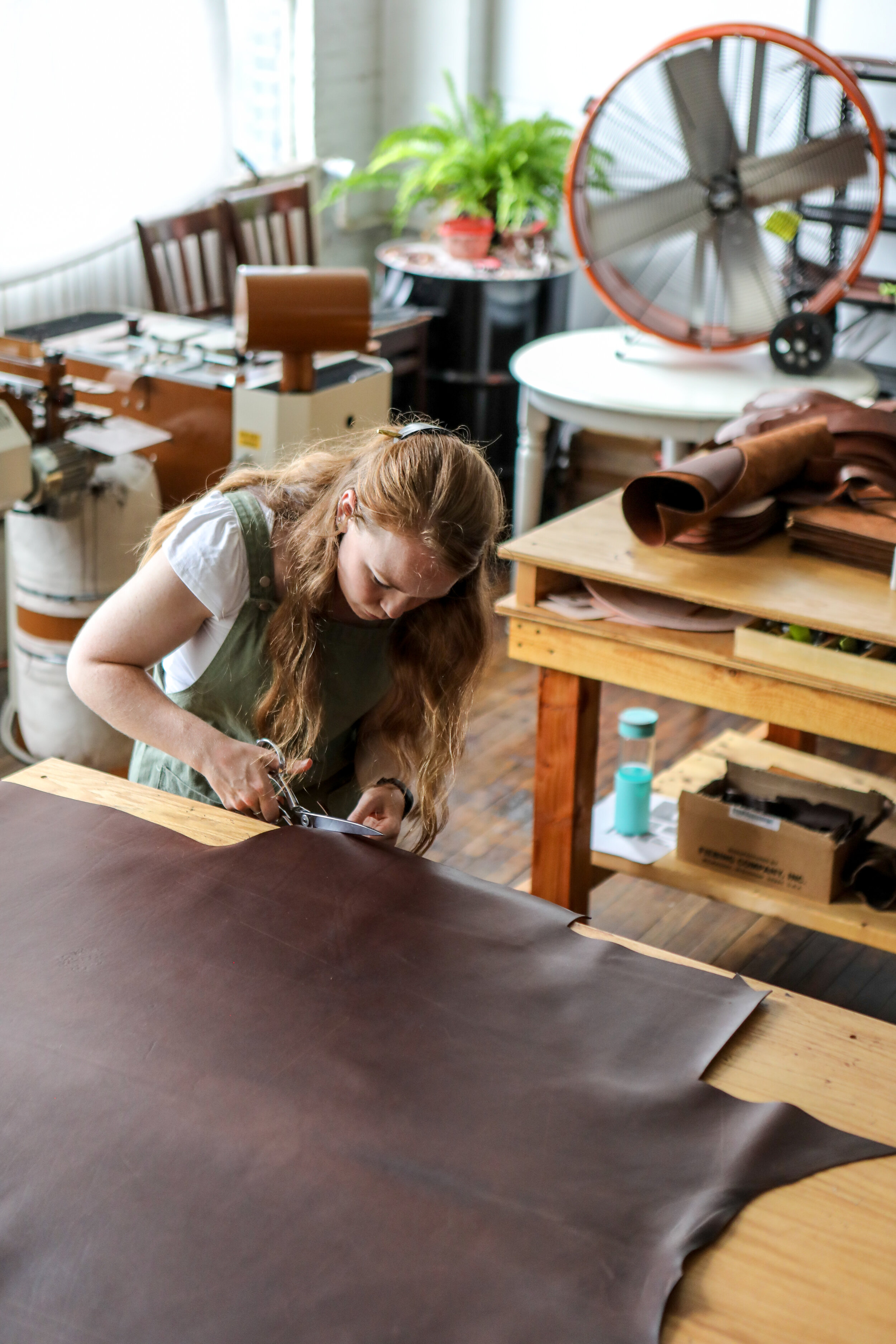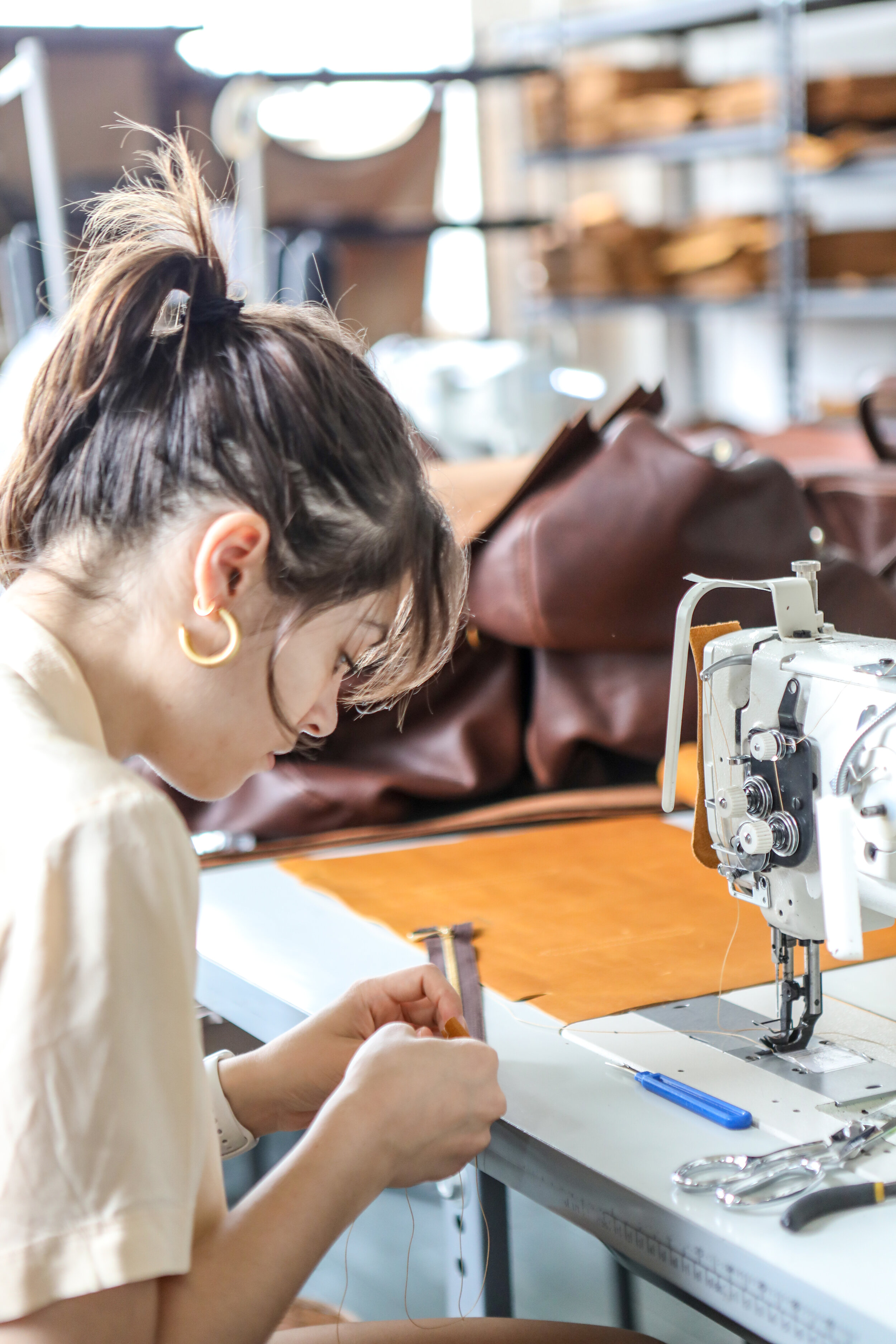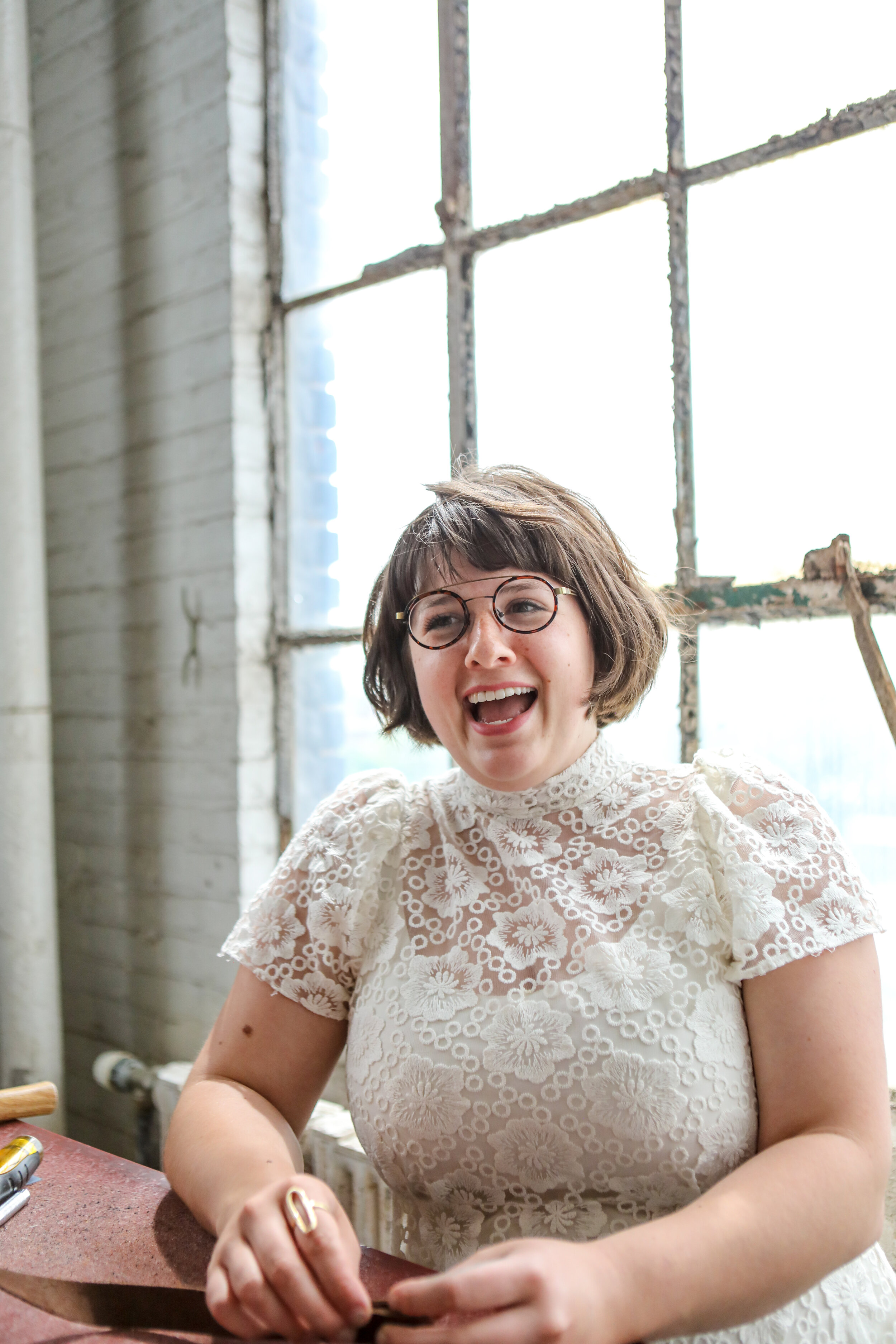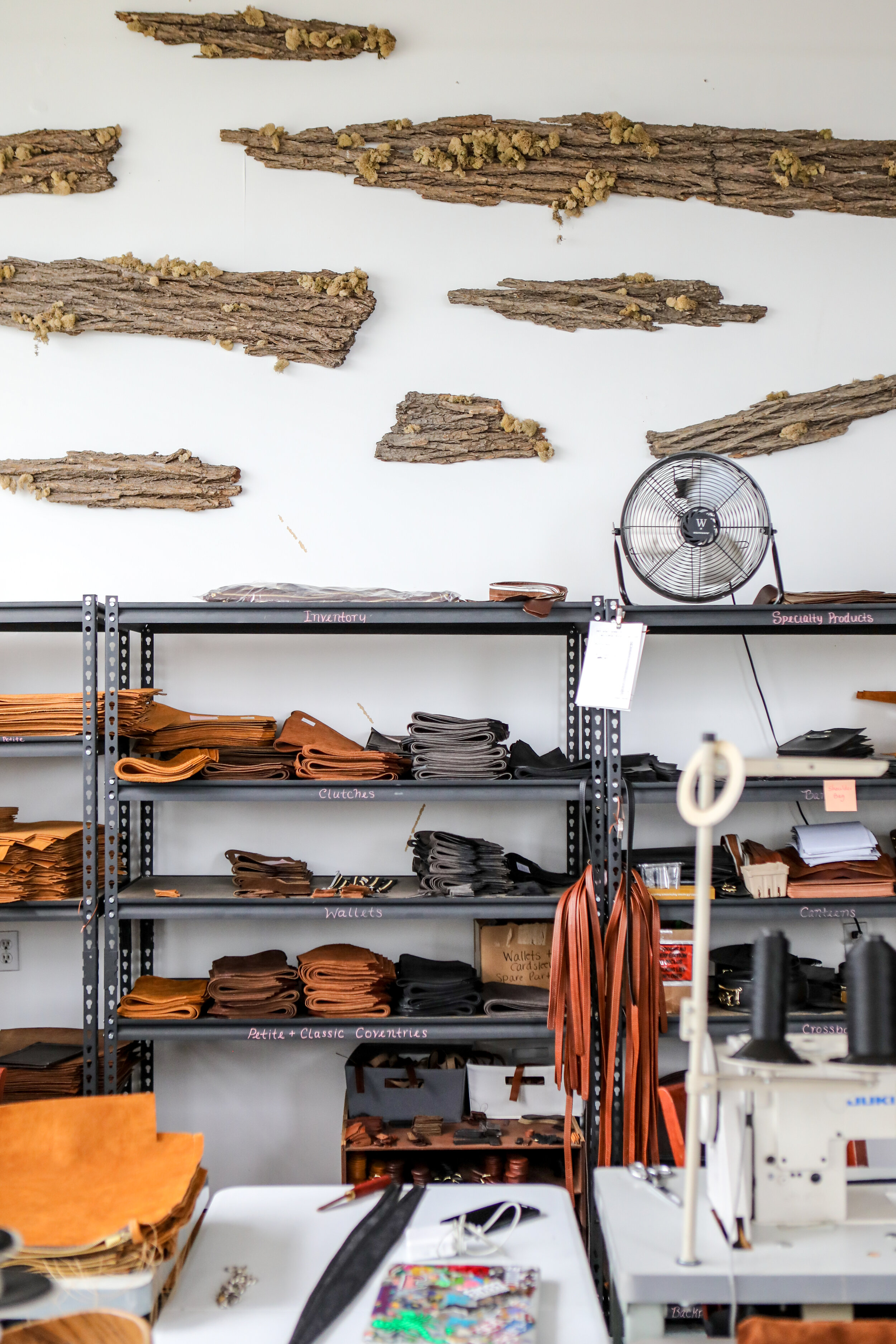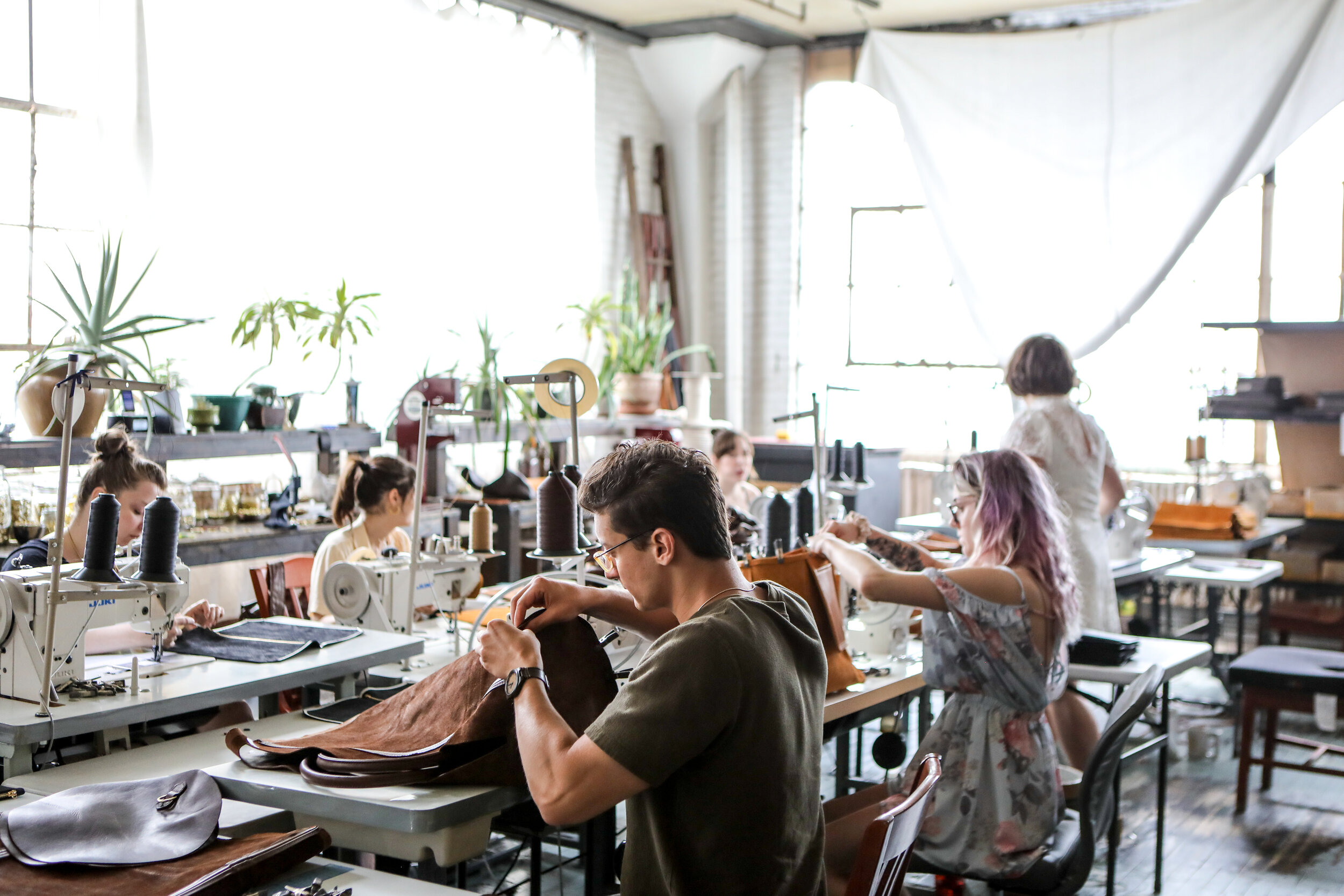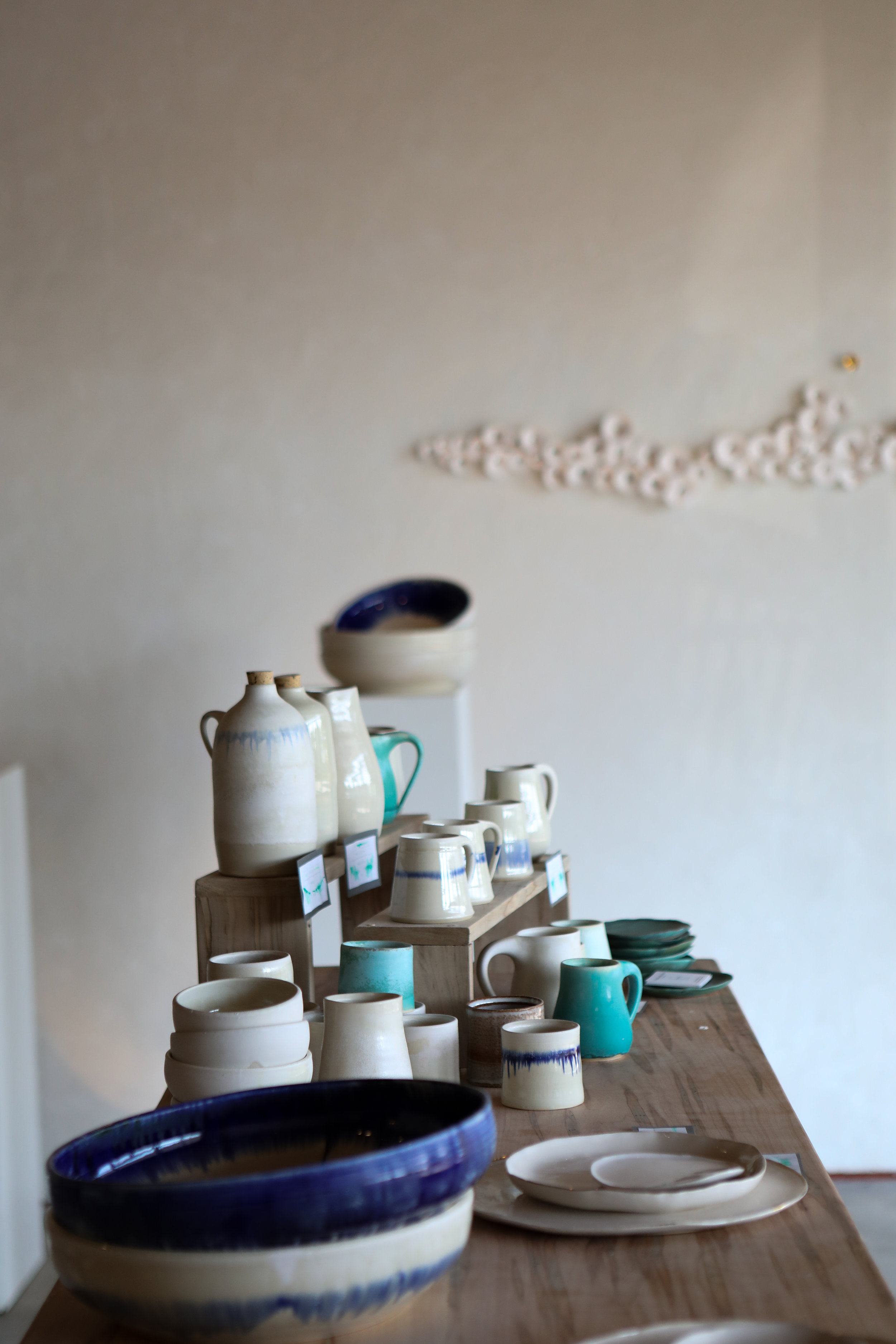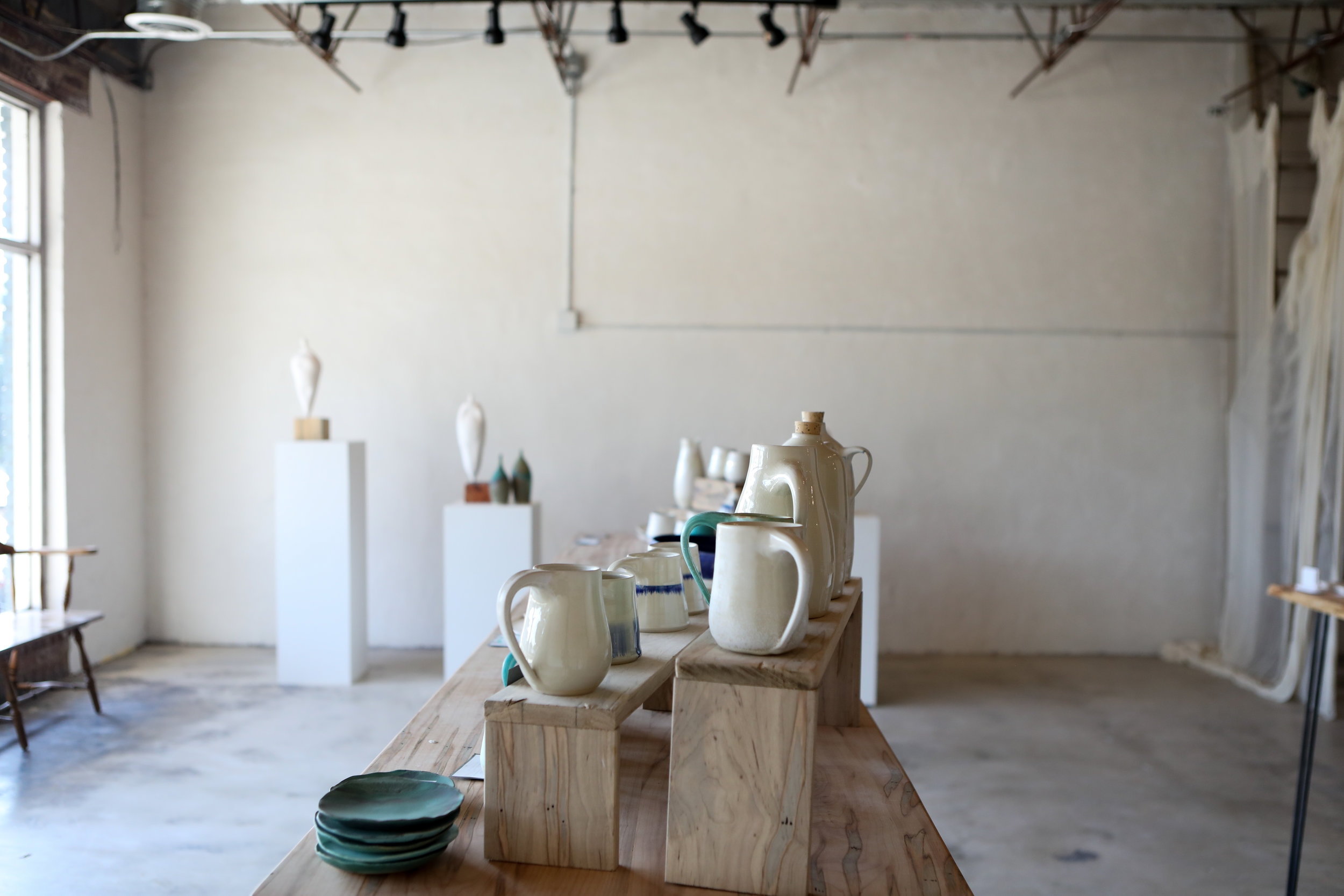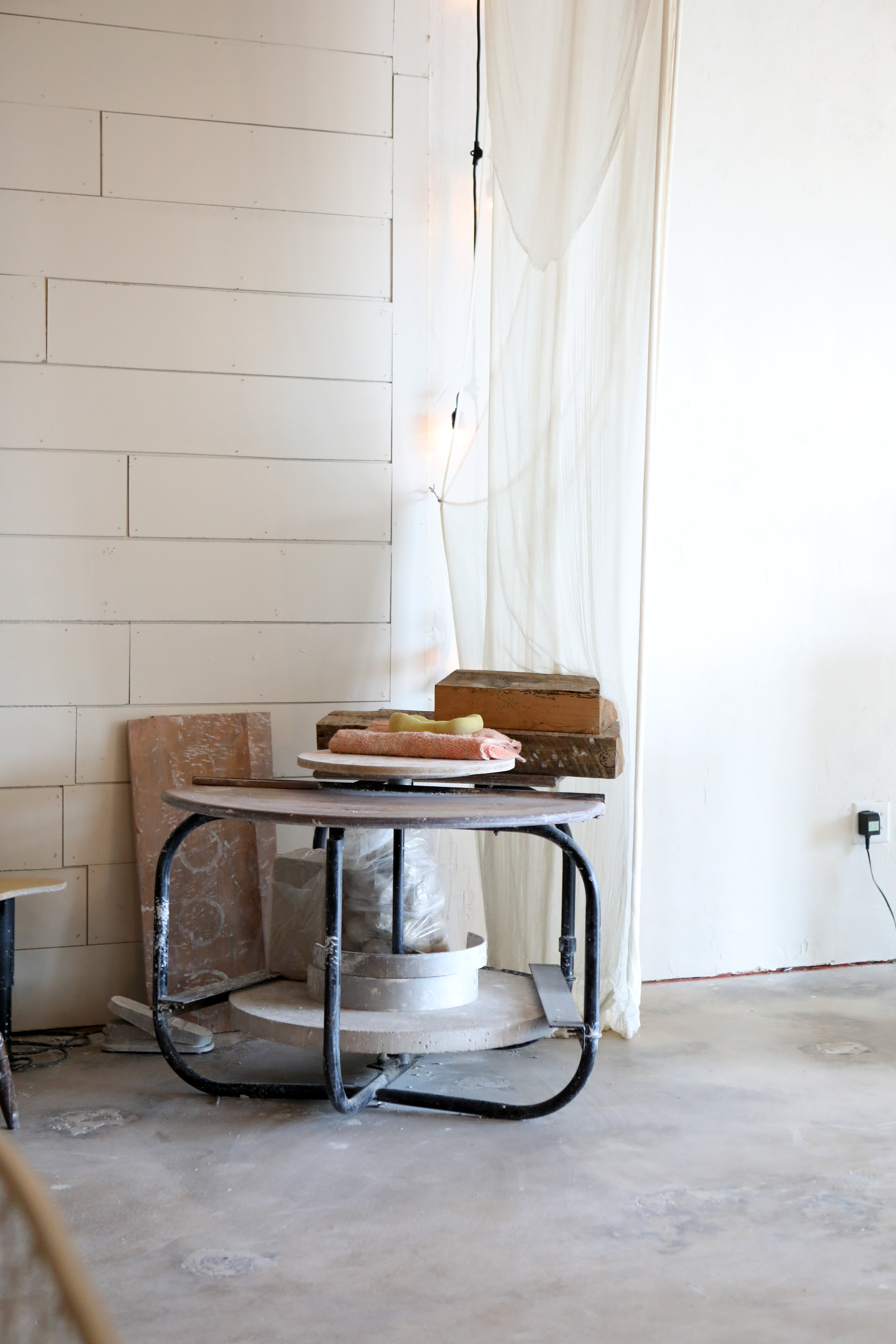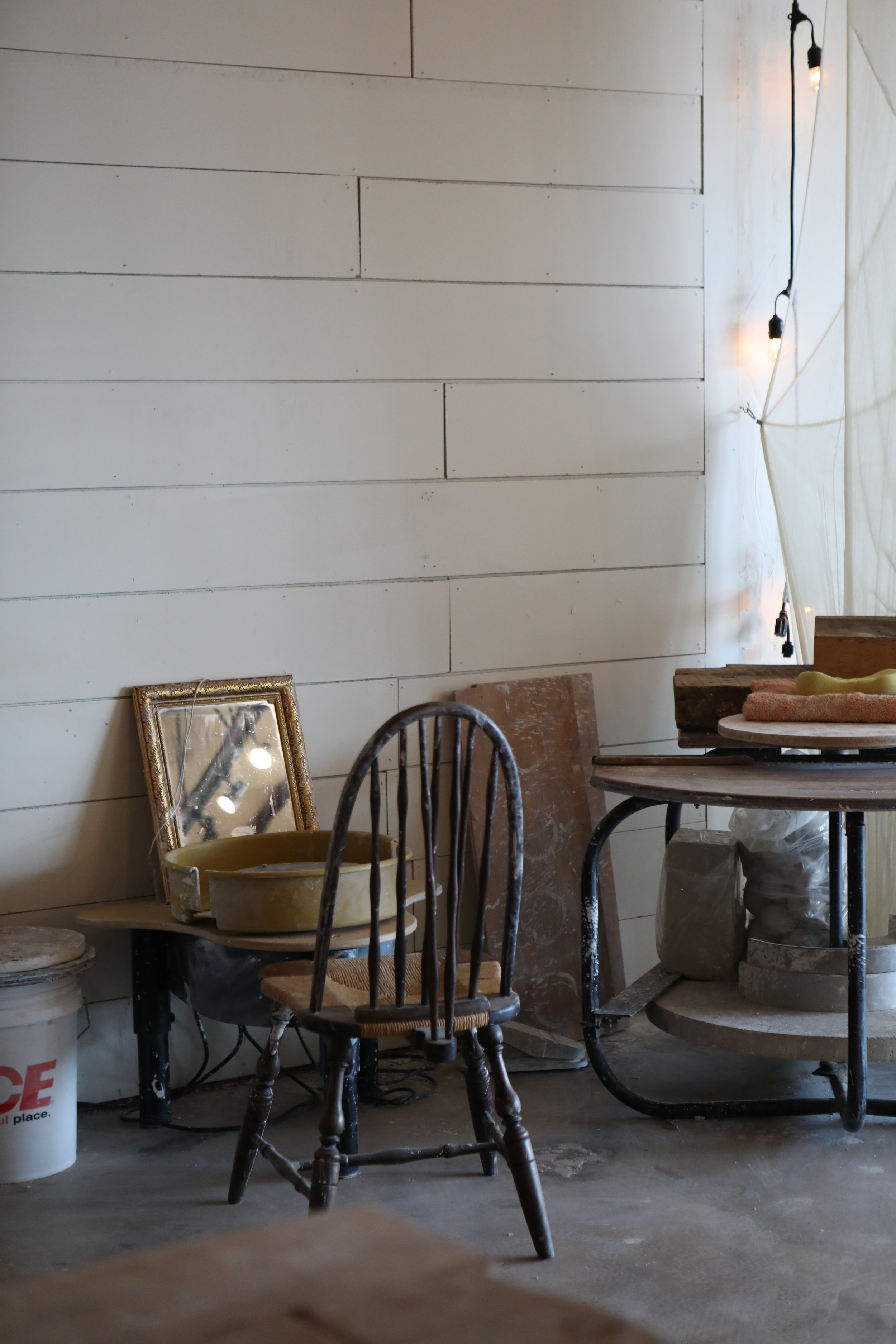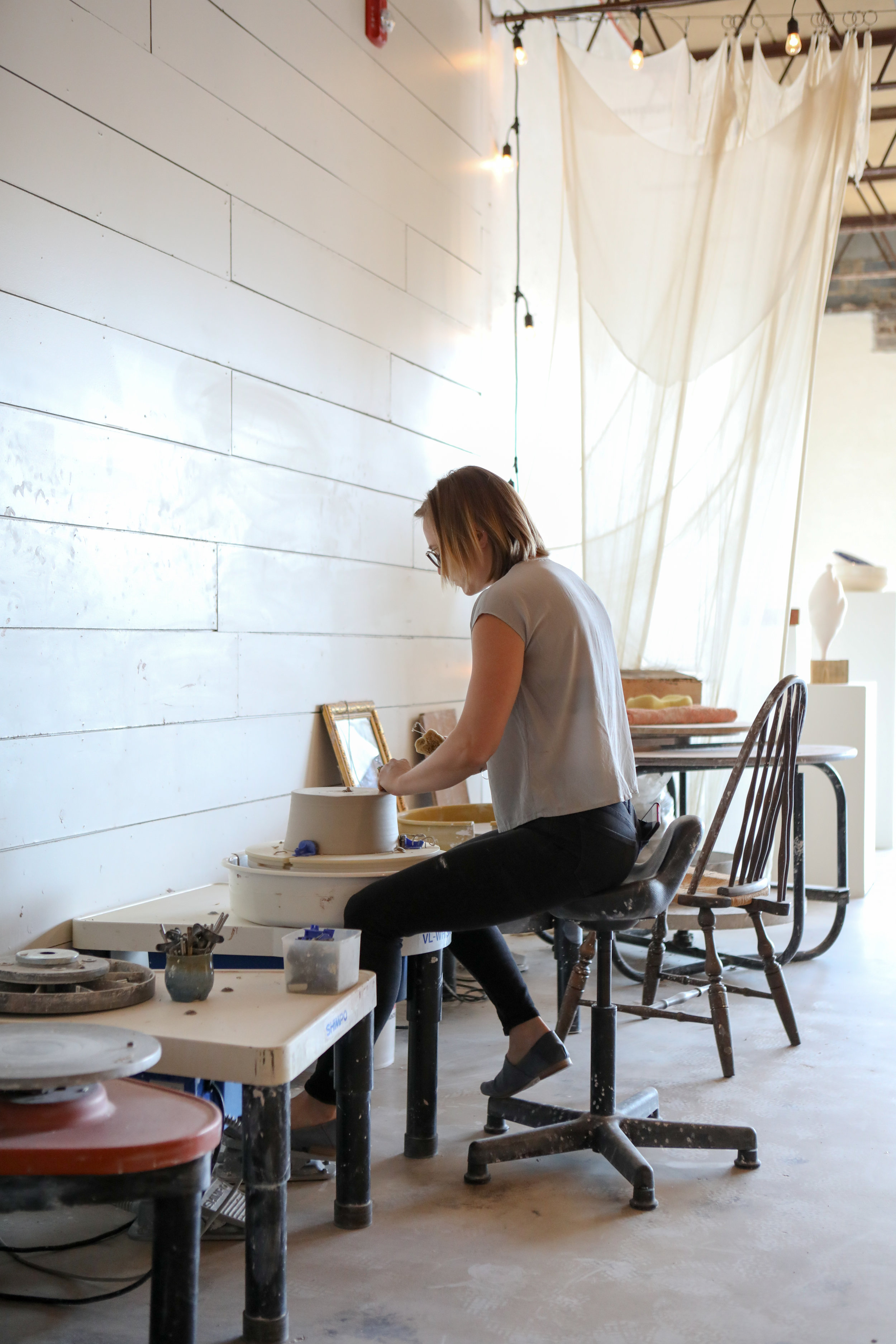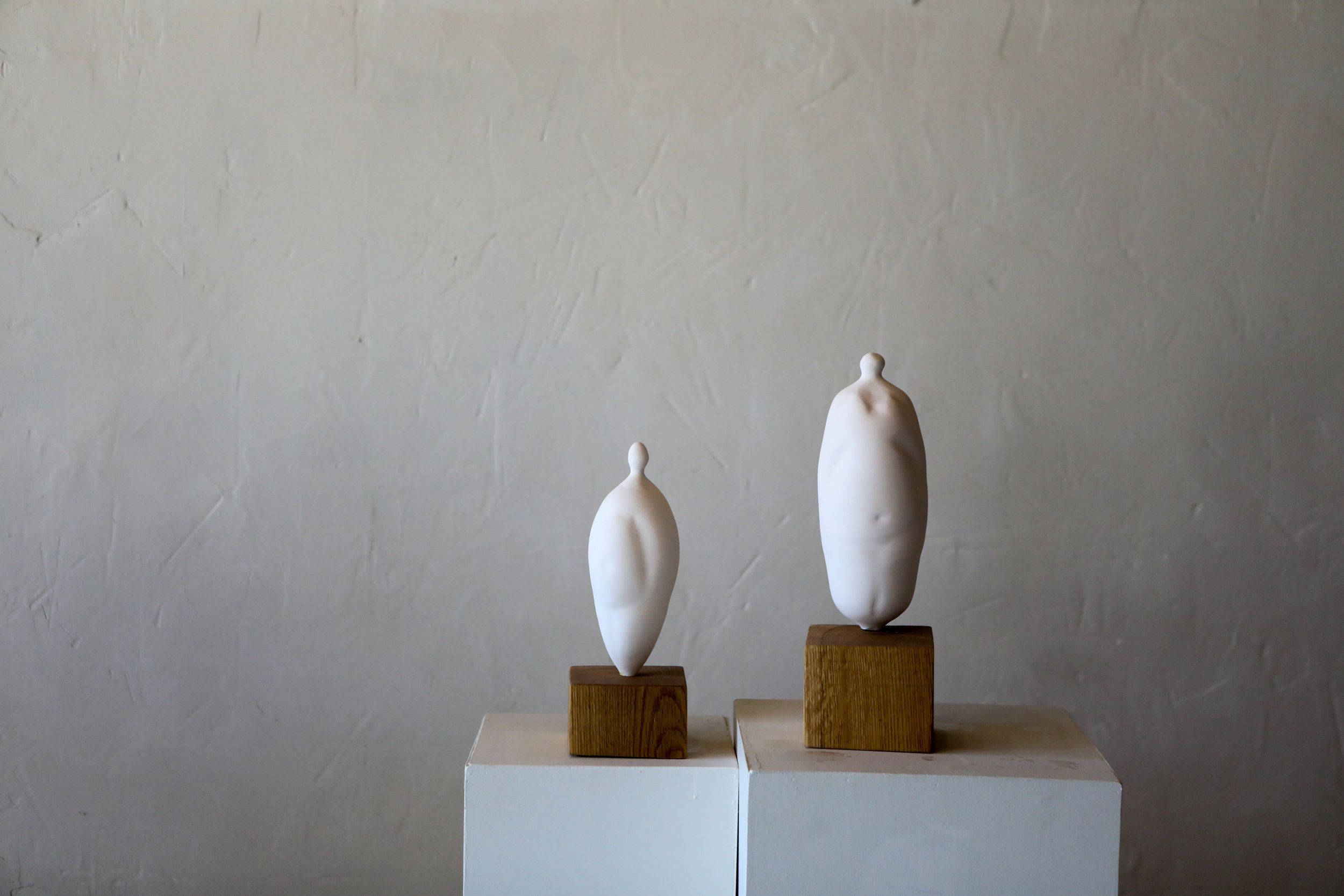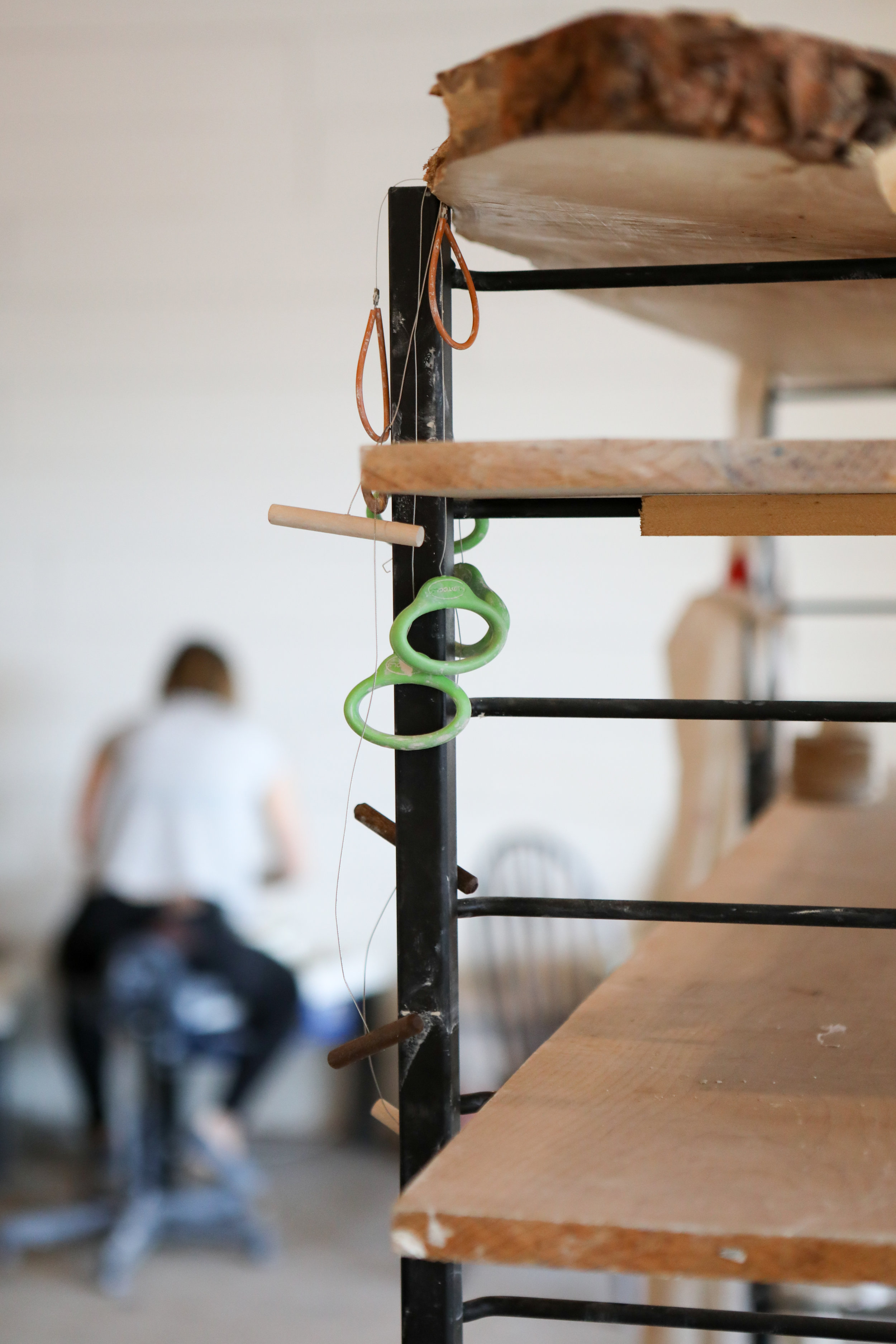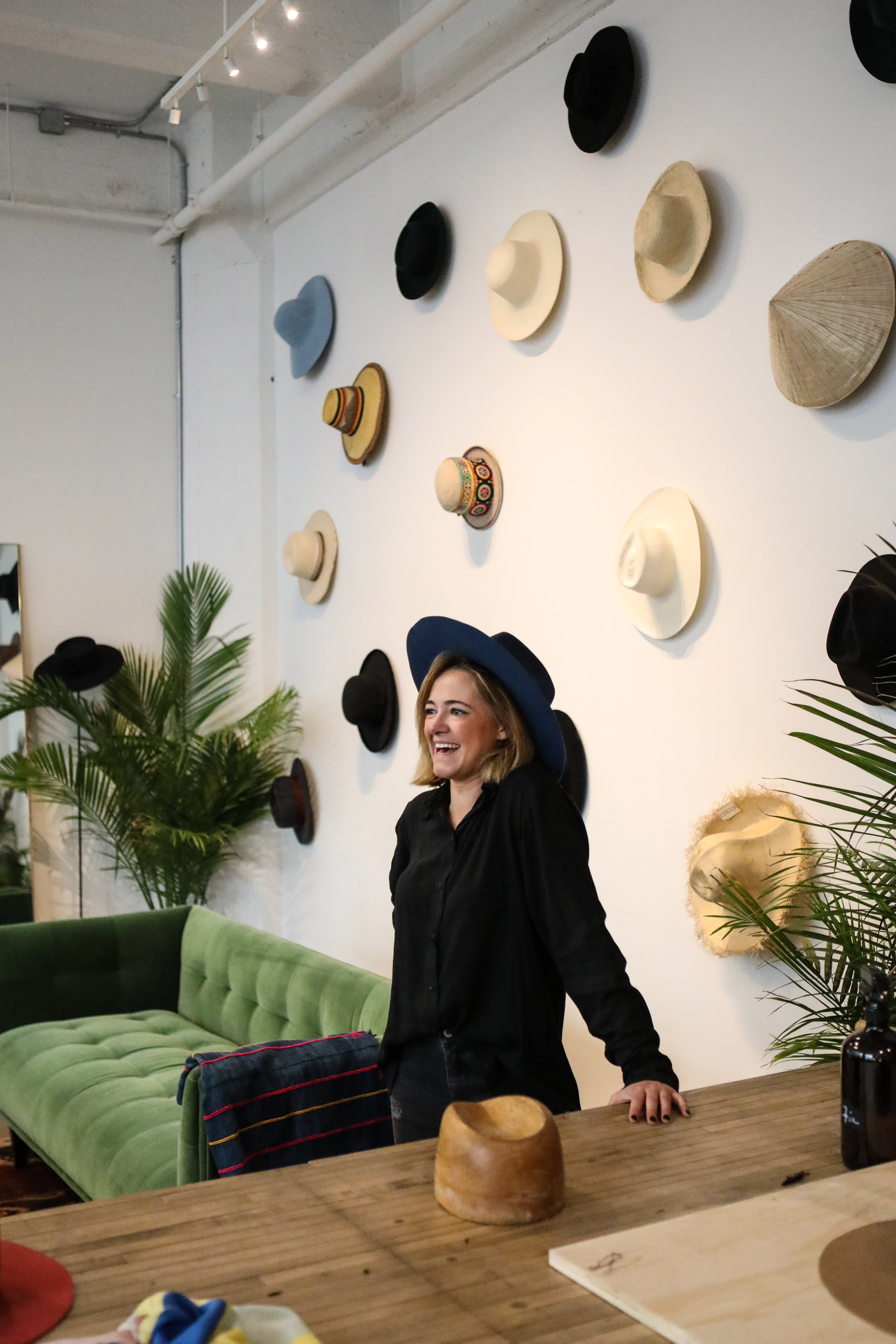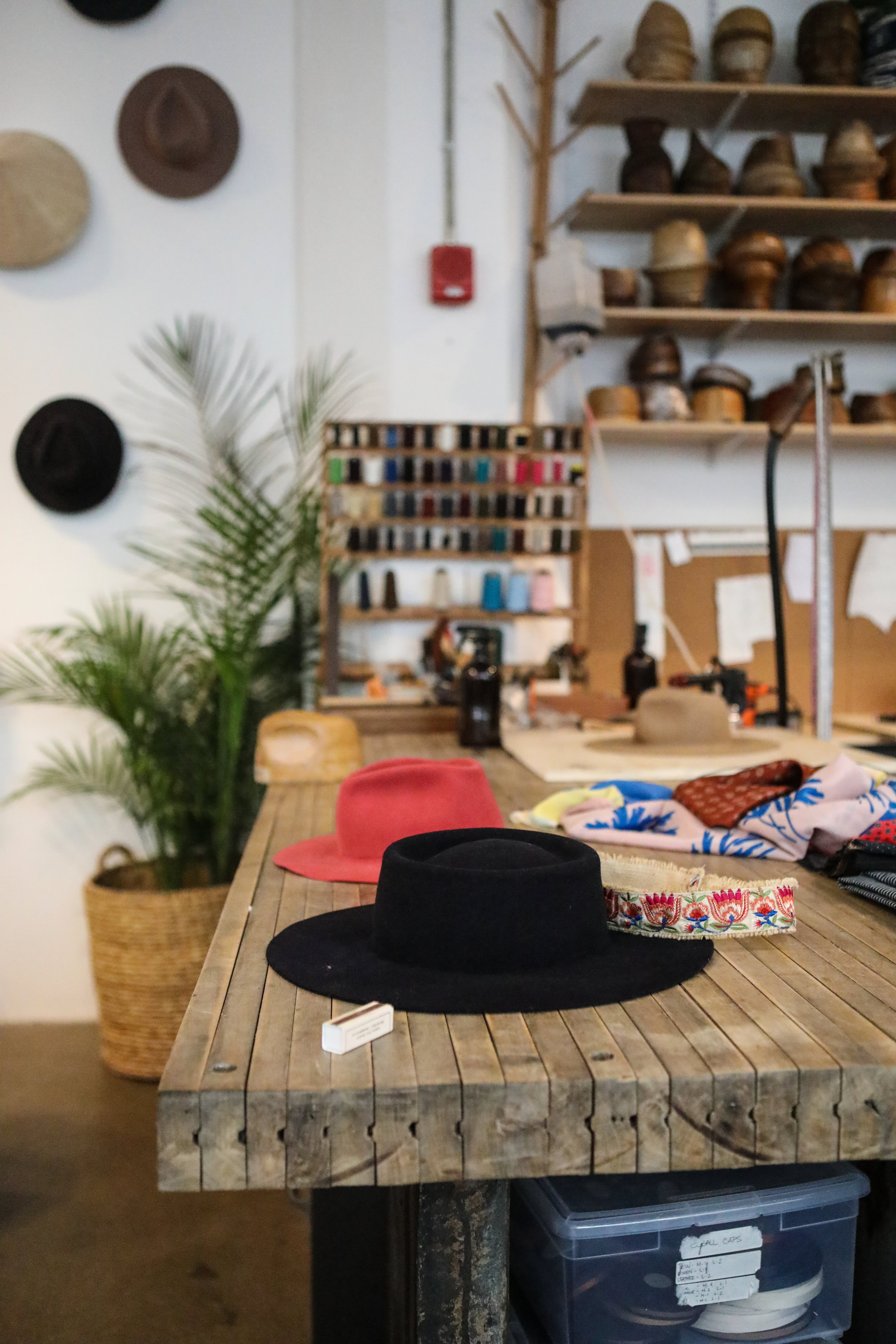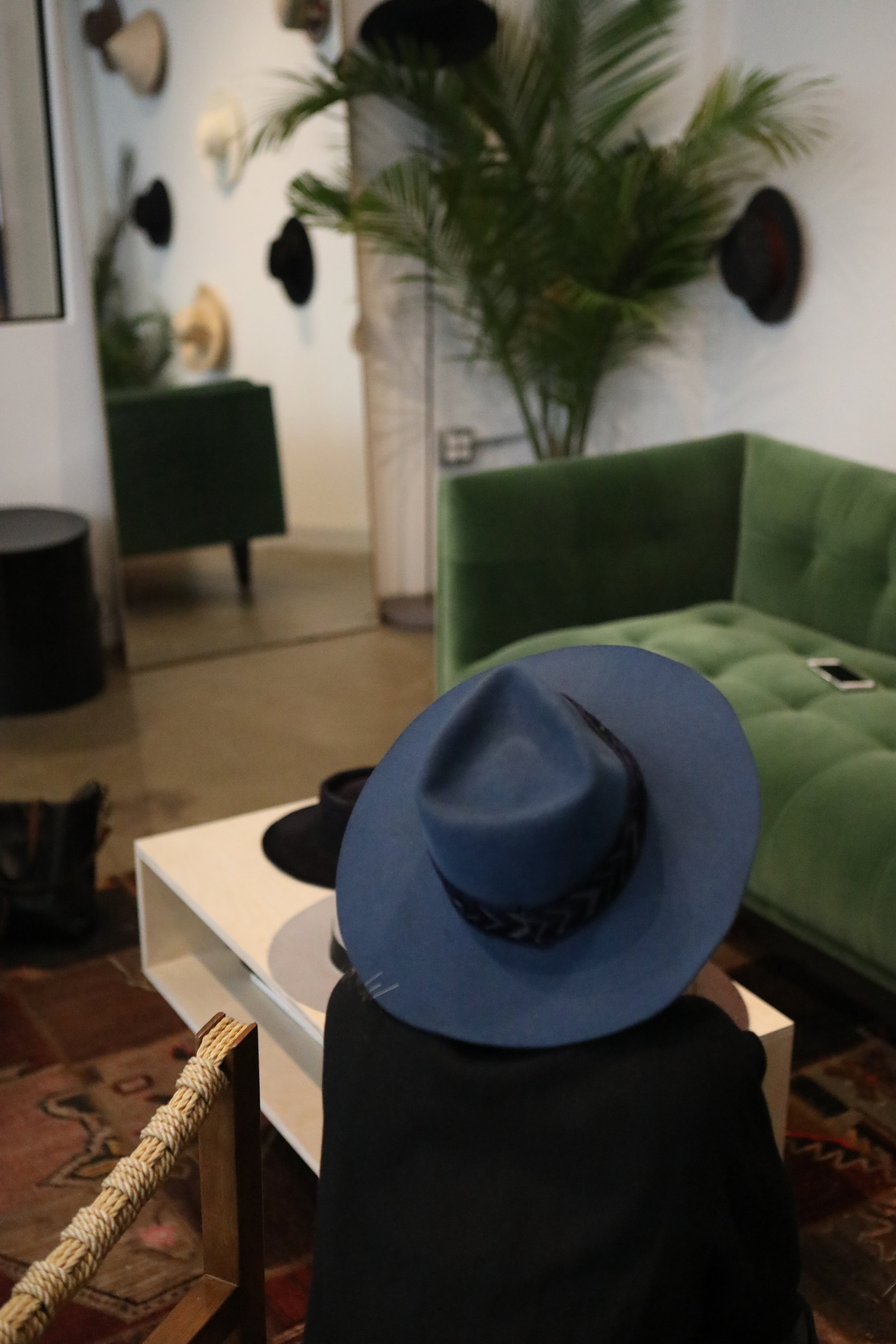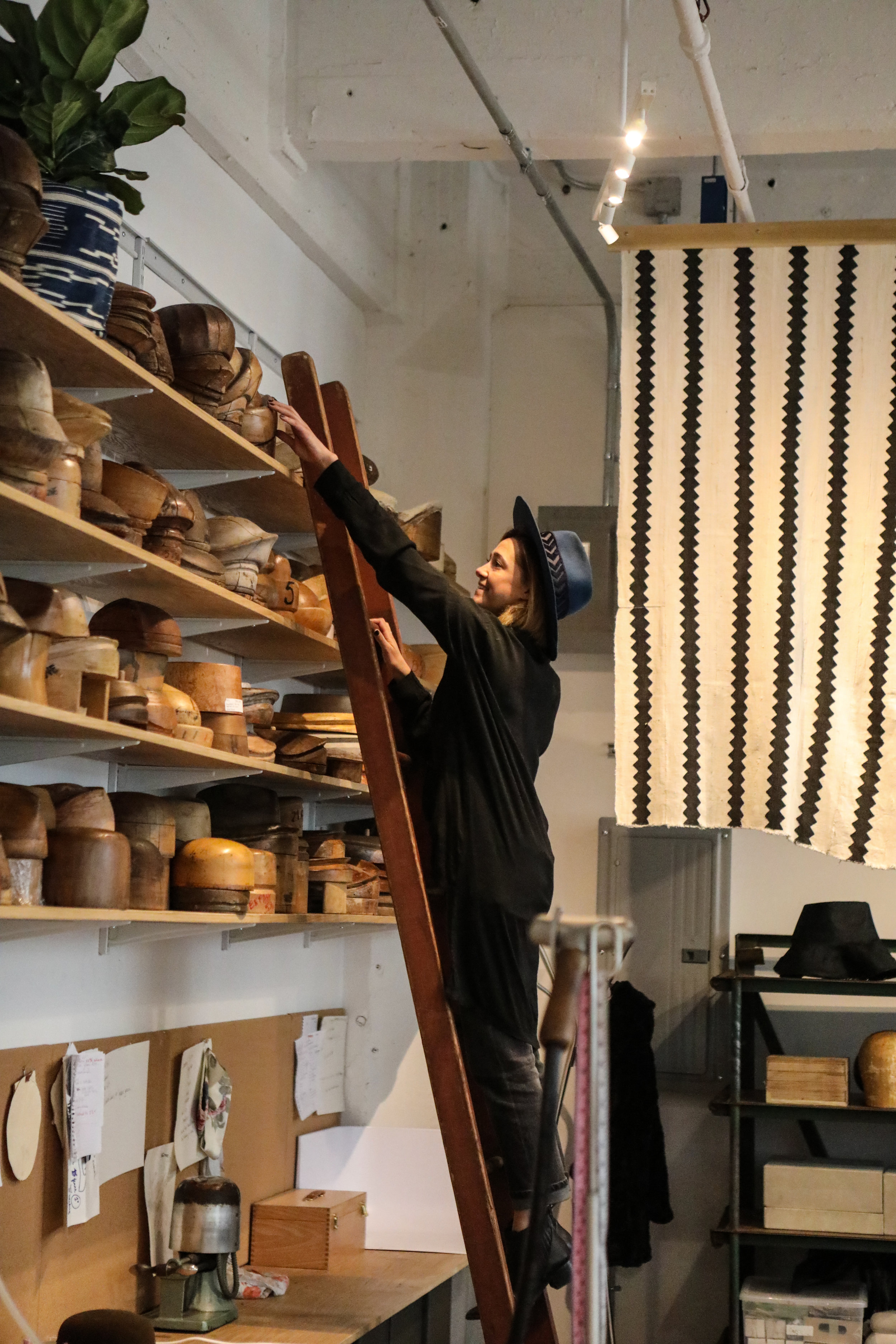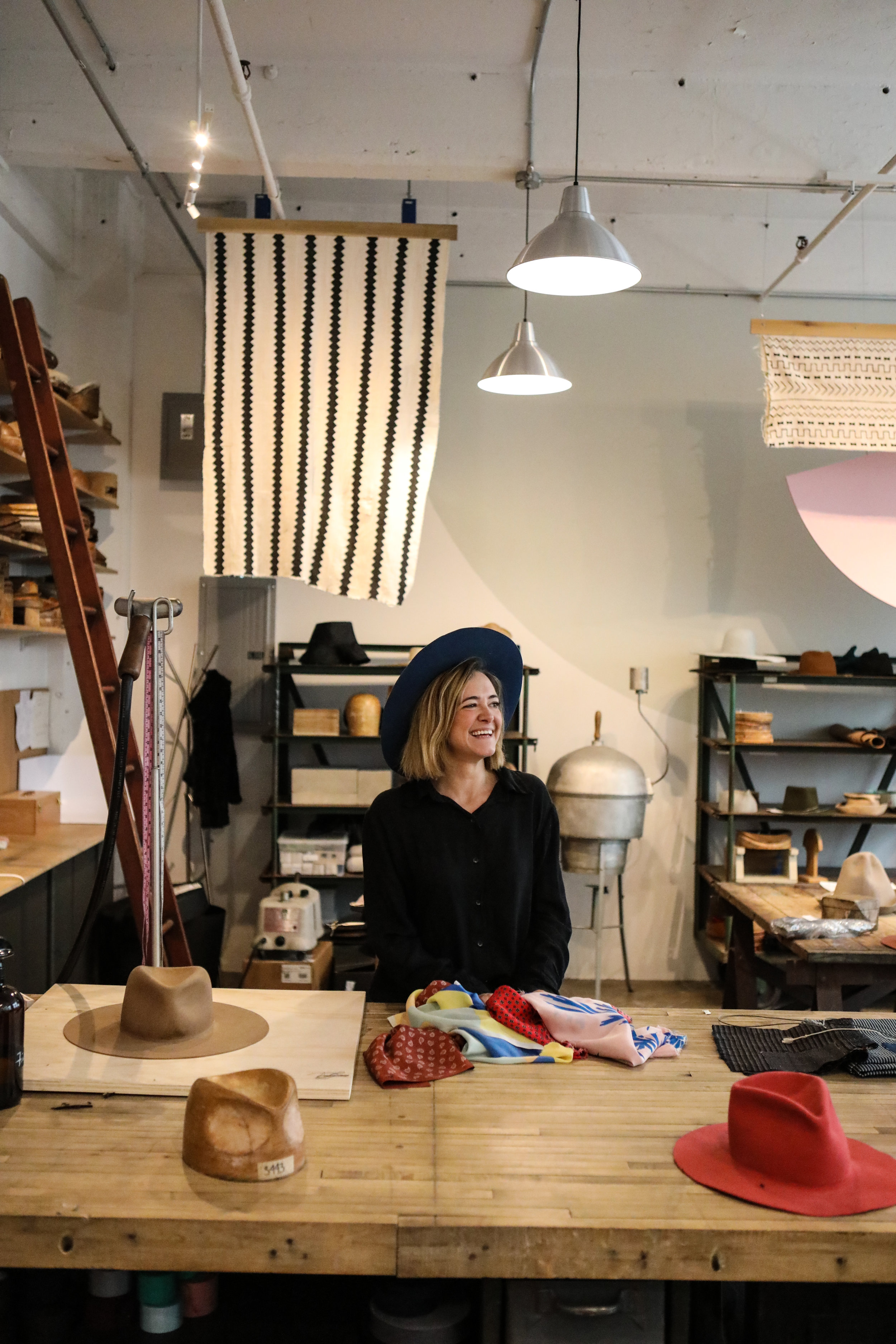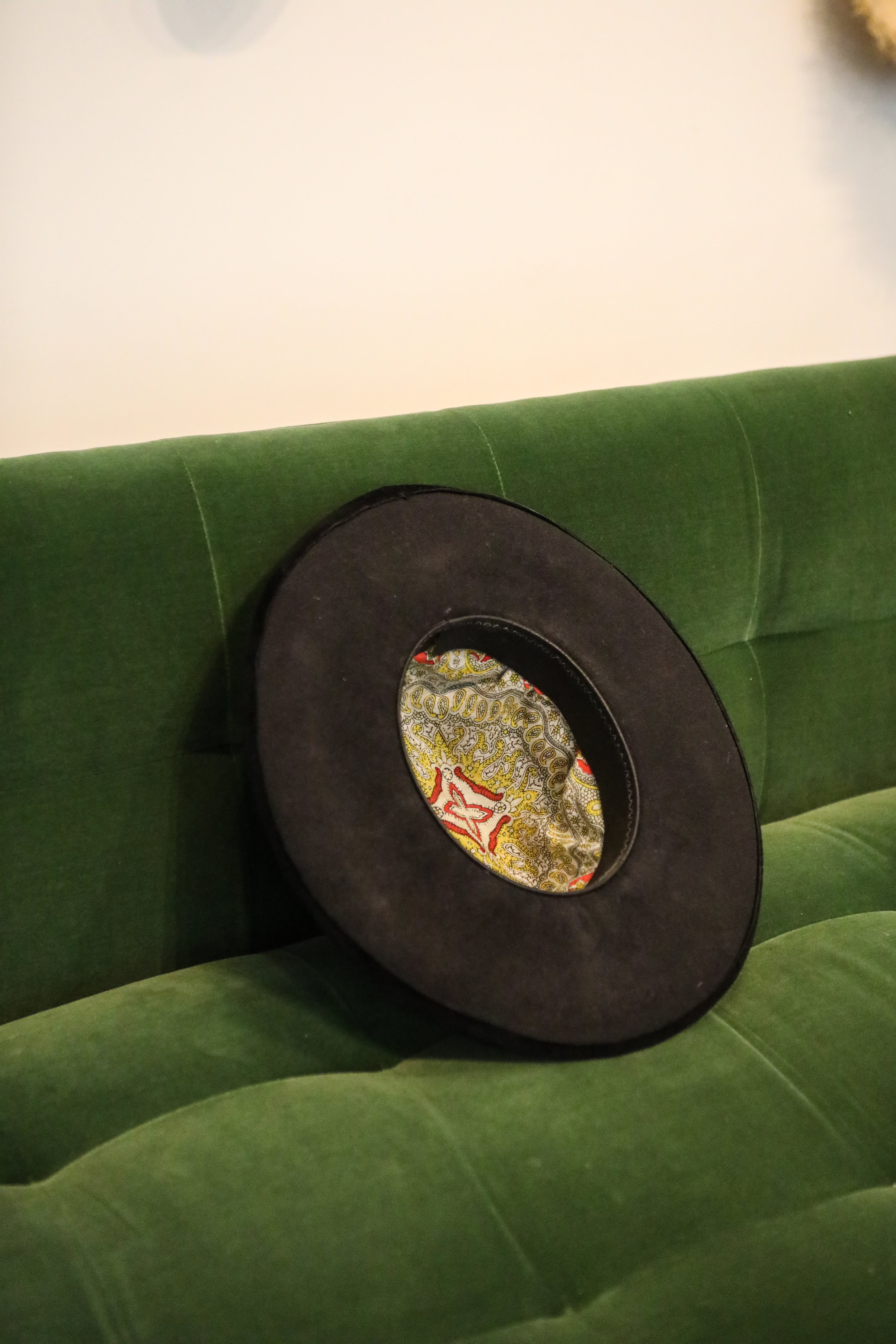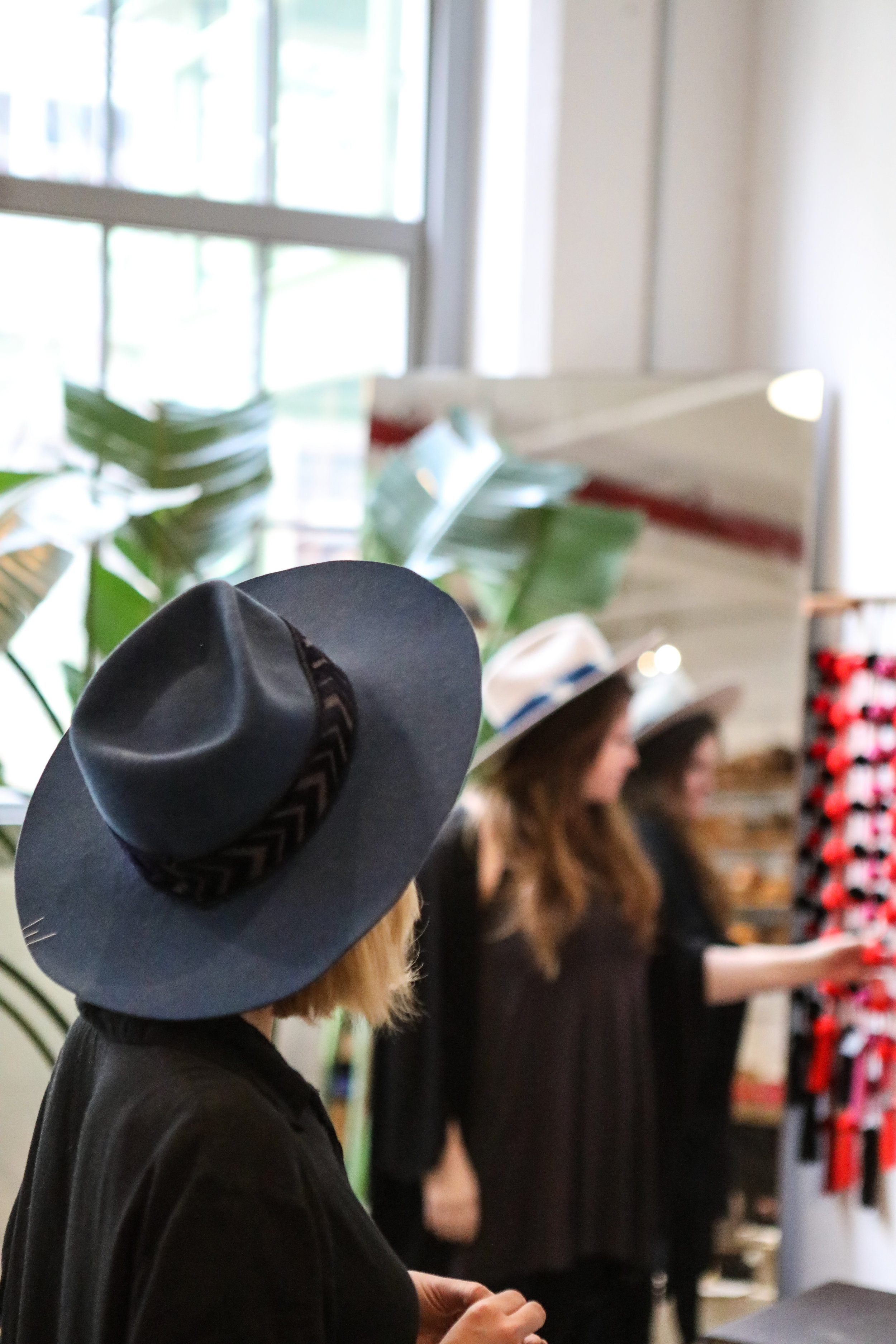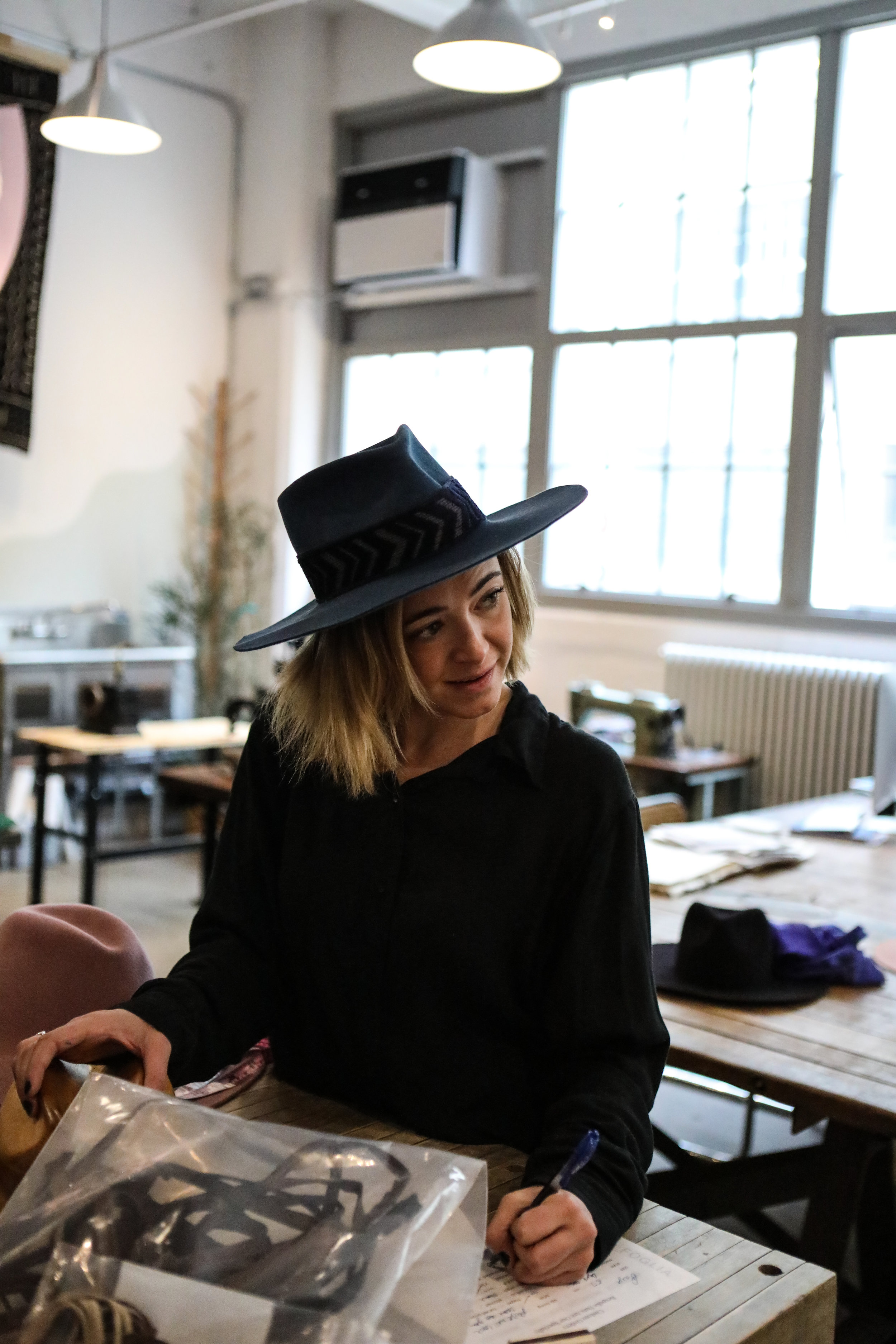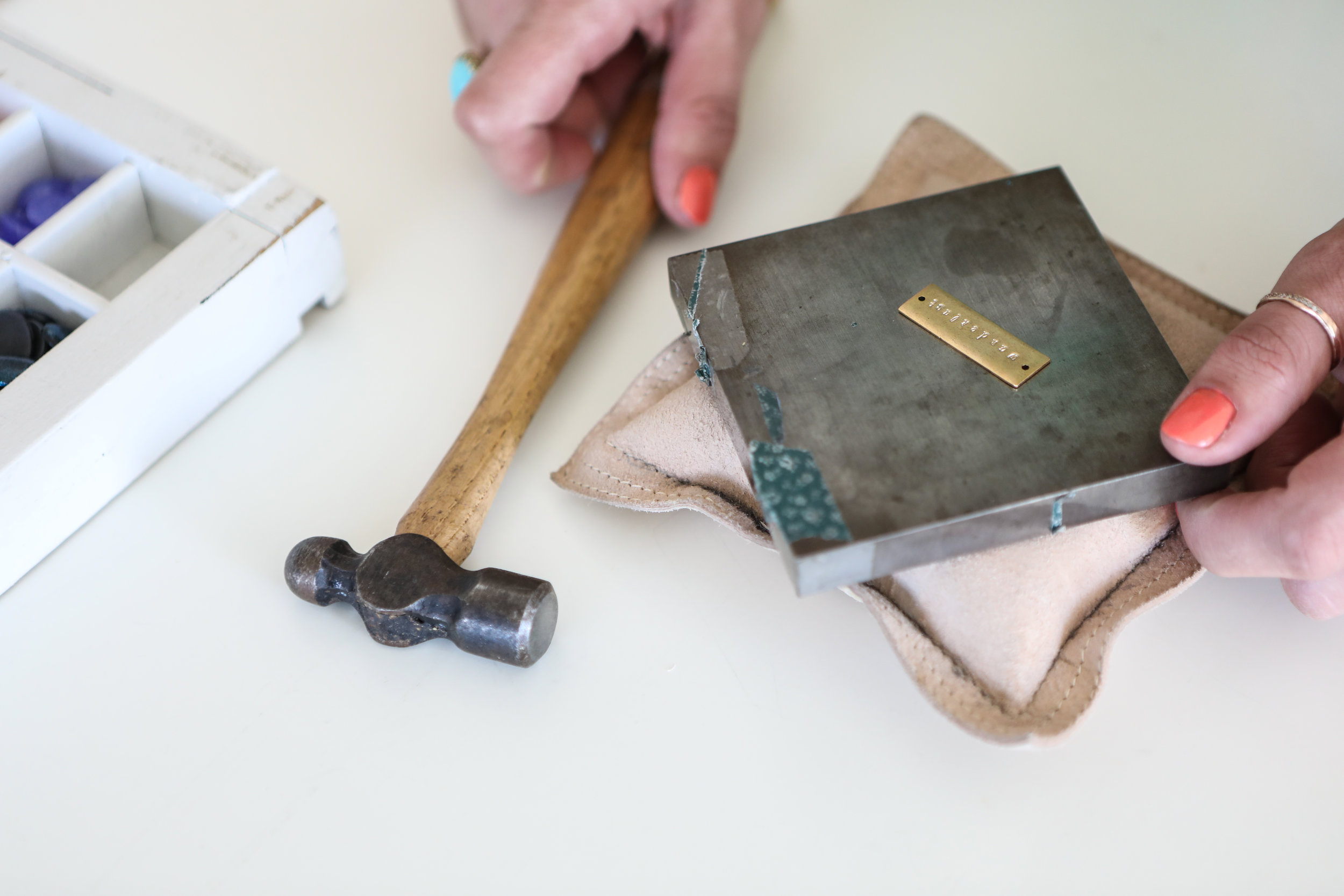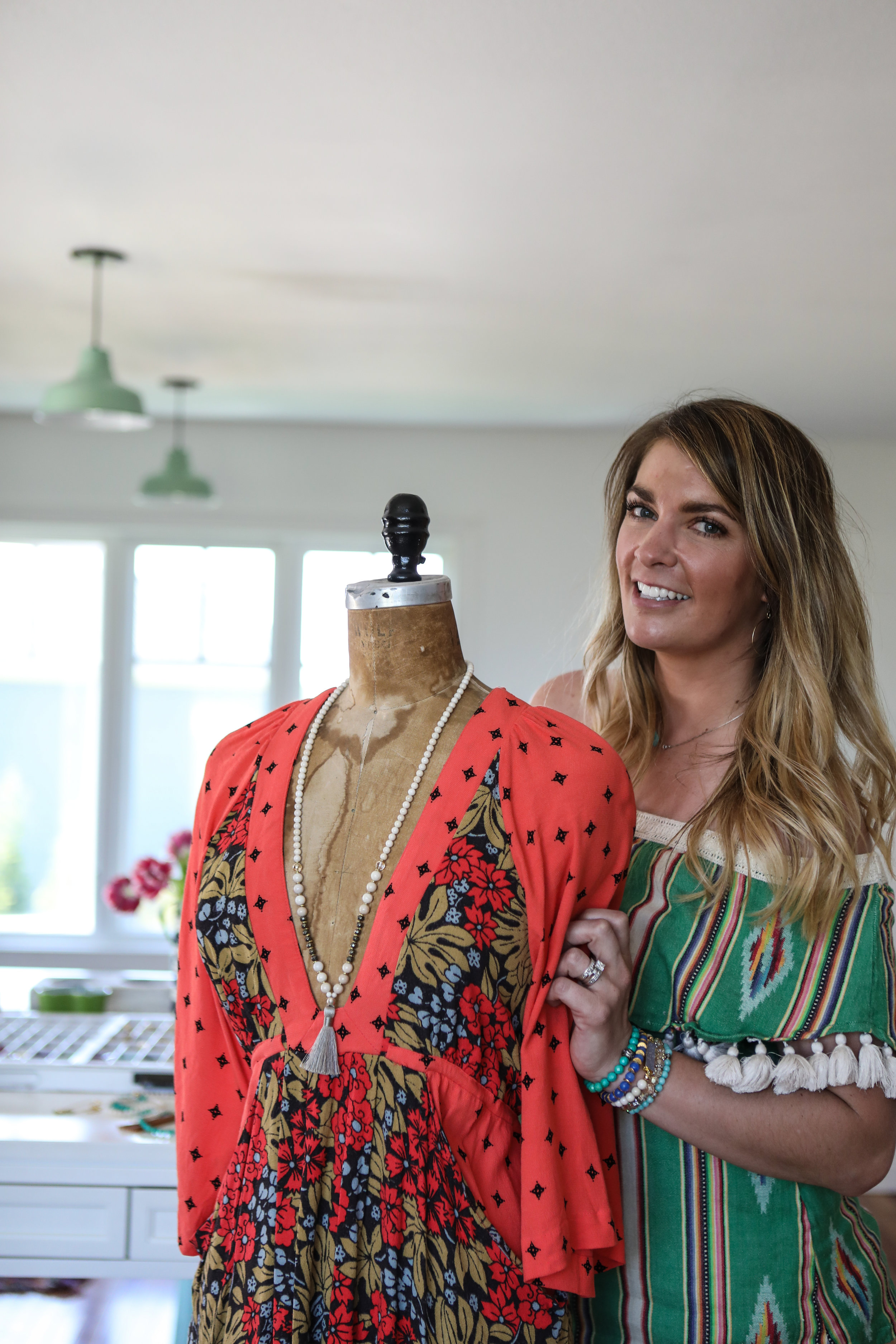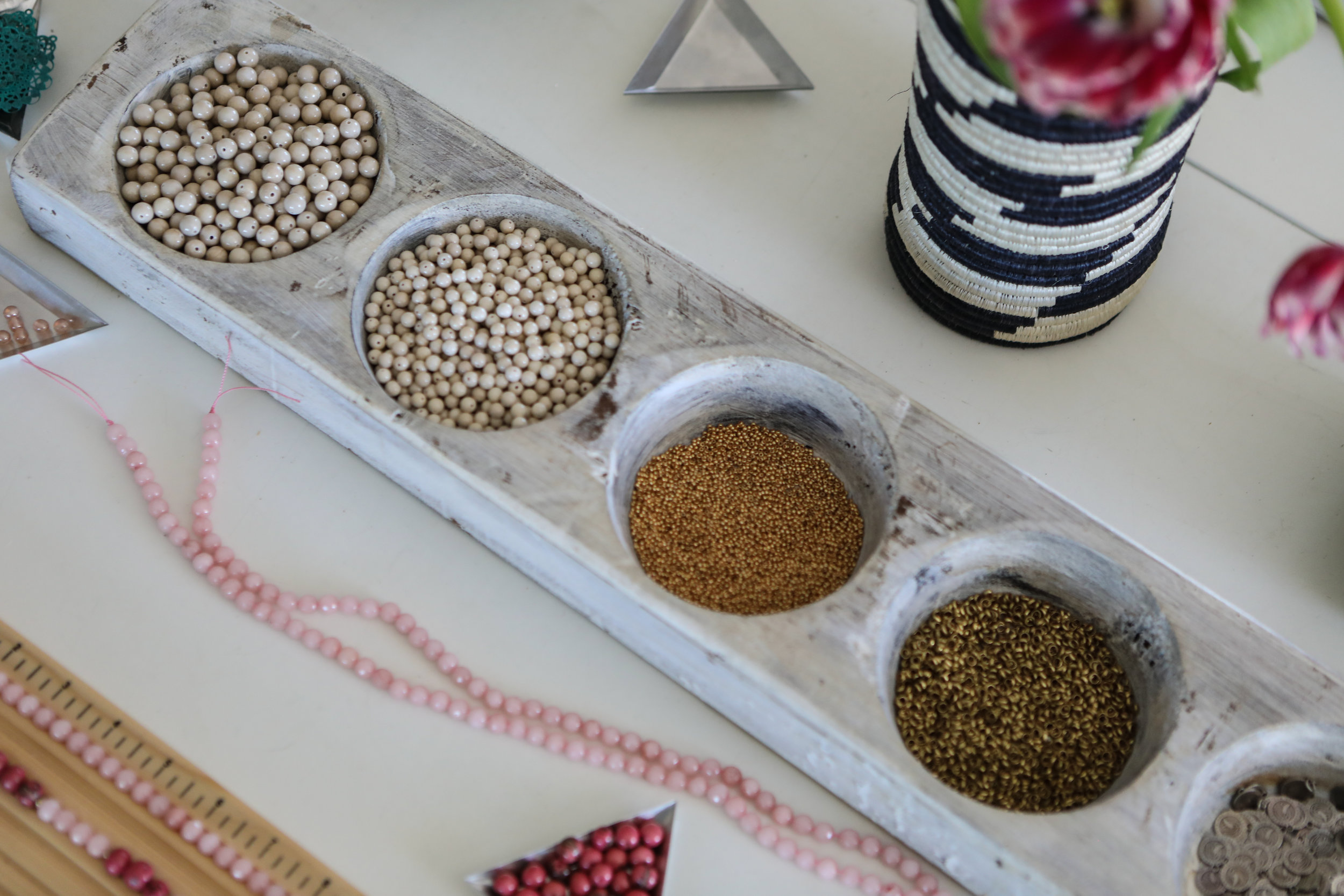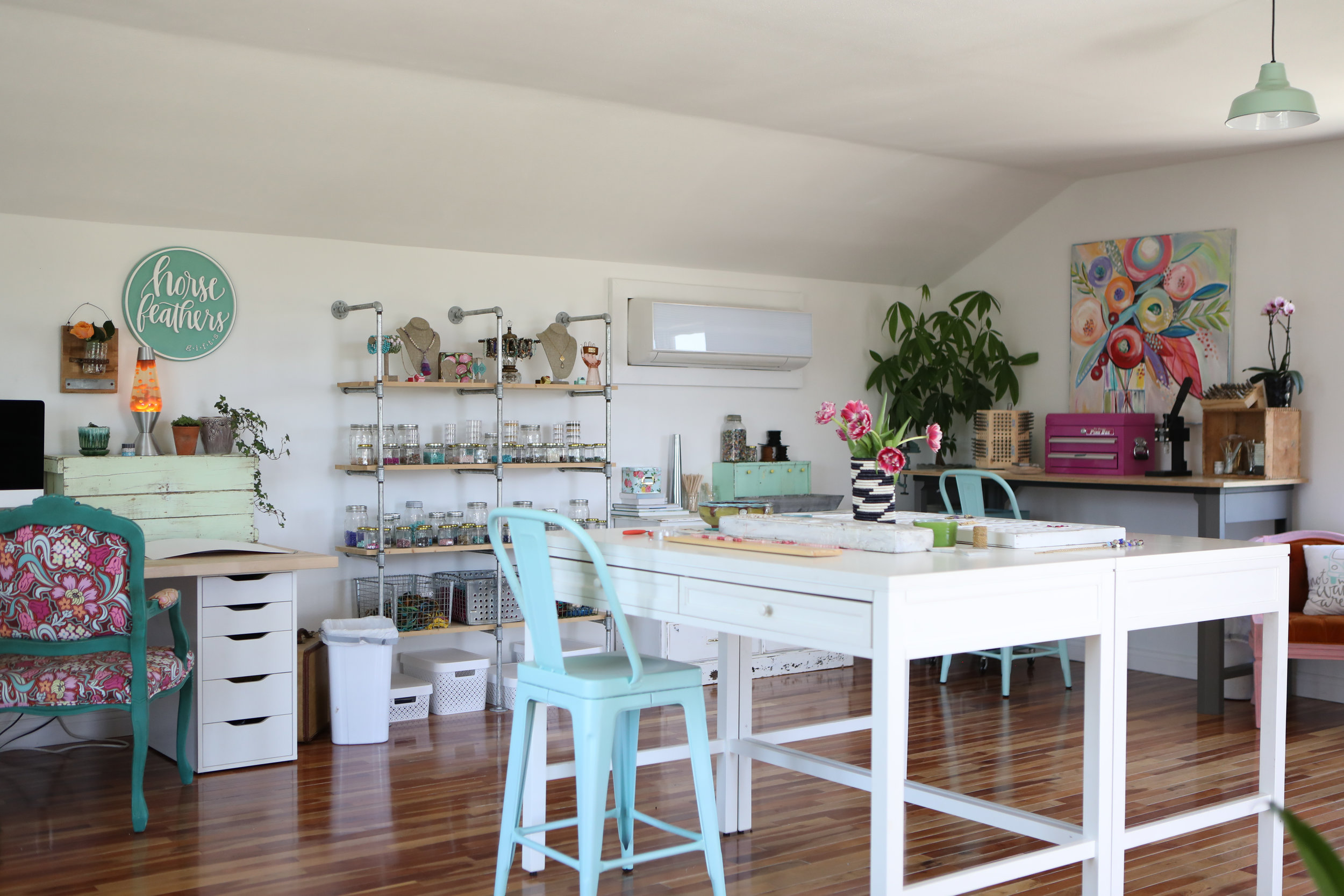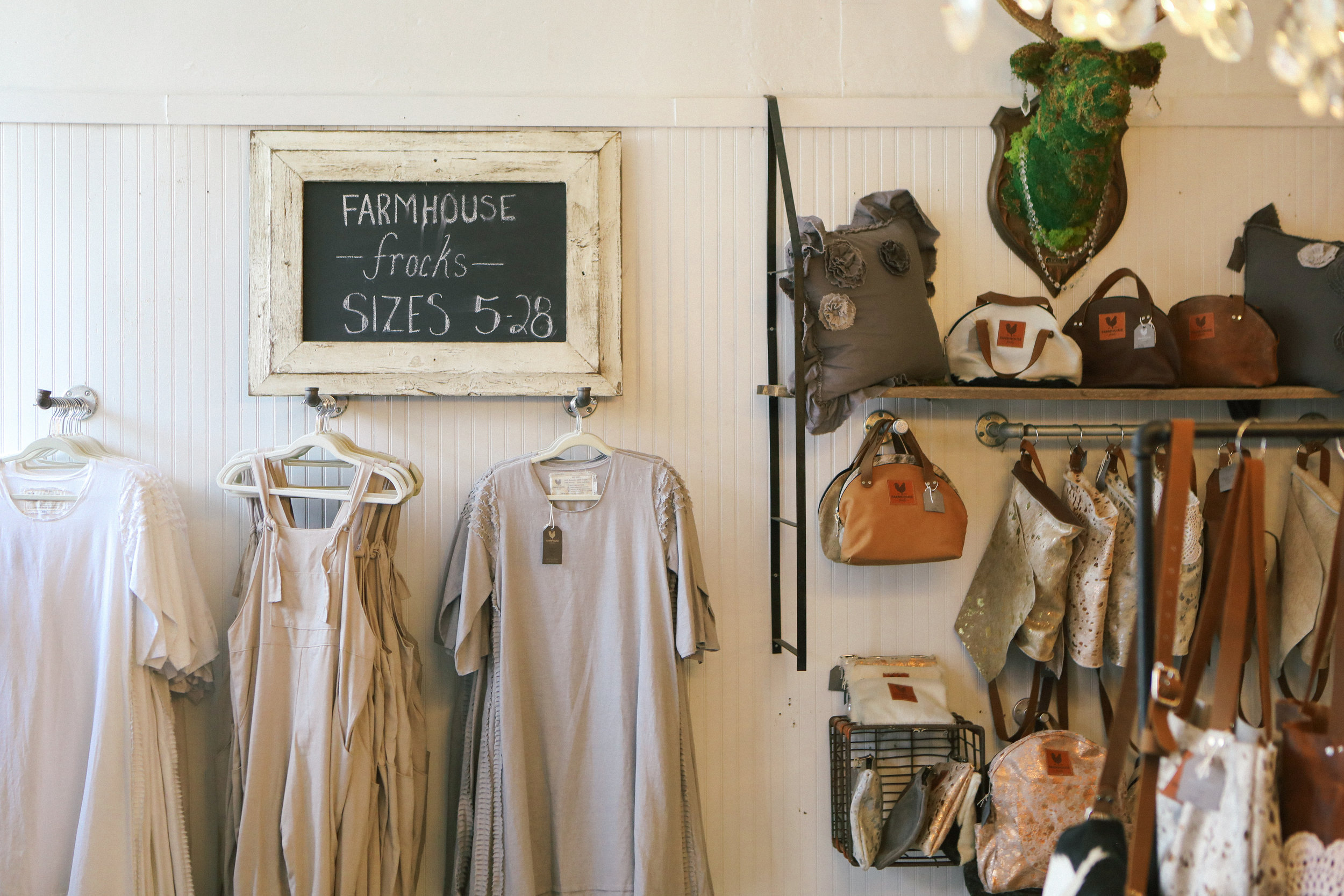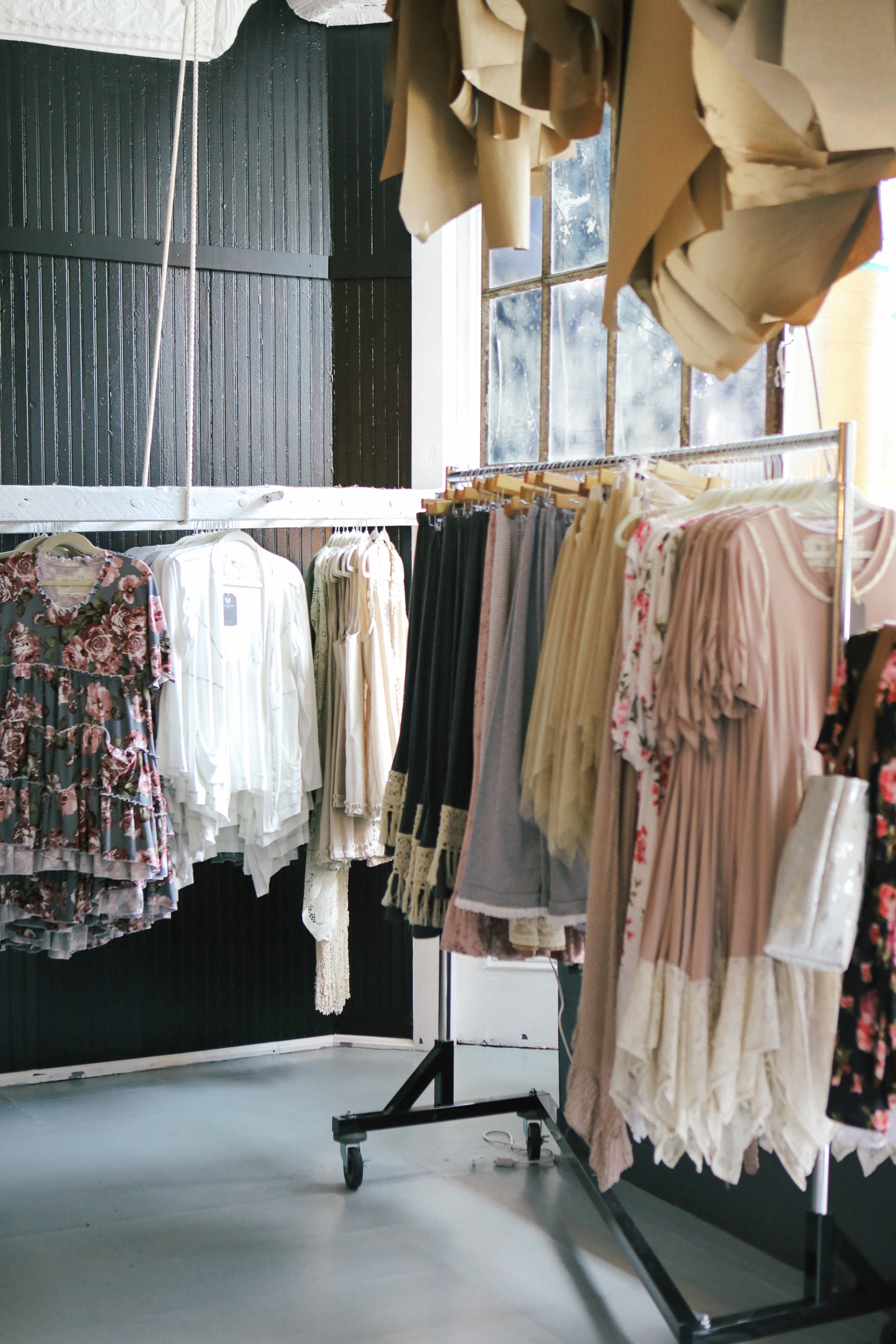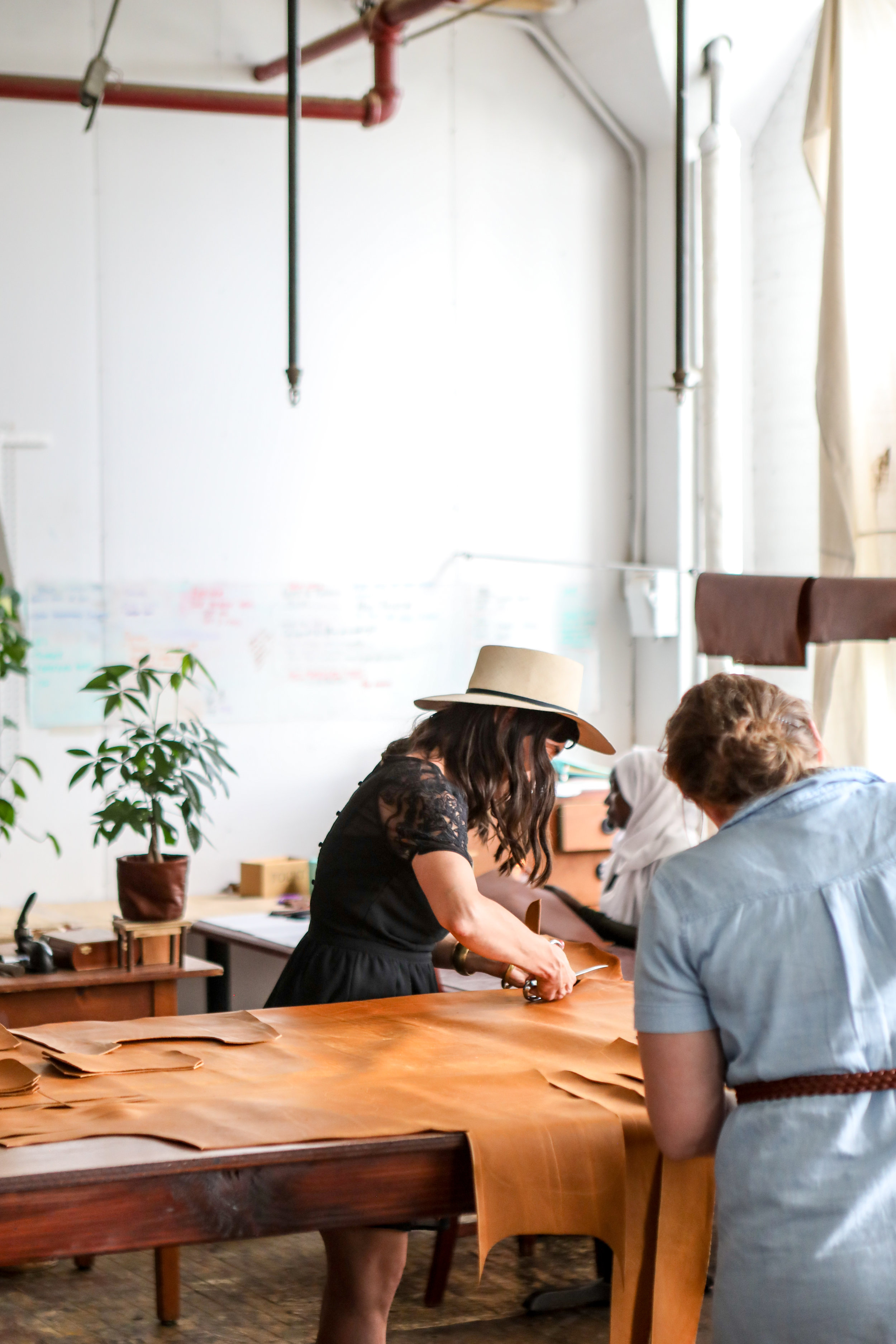A Storyteller's World — Christie Jones Ray
Ben Ashby
Somewhere just outside a tiny map-dot Kentucky town, Christie Jones Ray a storyteller, artist, quilter, and children’s book author creates a storybook world that unfolds against the backdrop of the rural South. Born and raised in Orlando, Florida, her soul longed for the serenity of the countryside, inspired by the cherished memories of visiting her grandparents' farm in Kentucky during the 60s and 70s.
Over three decades ago, the Christie became a resident of Pleasant View, Tennessee, marking the beginning of a journey filled with life's twists and turns. An engagement to a dear man led to marriage in the summer of 2007, followed by a move to Historic Downtown Franklin, Tennessee, four years later. Life in a tiny Victorian cottage unfolded like a storybook, and in the year she turned 50, the storyteller embarked on the journey of self-publishing children's books, creating a magical world of her own. Eight blissful years in that cozy cottage were followed by a return to Pleasant View, only to be drawn to a property in her beloved Kentucky in the summer of 2022. The Victorian-style farmhouse built in 1911 seemed to await her, and a cozy log cabin just steps away completed the idyllic setting. A year later, after renovations, they made the move, creating a haven in the peaceful rural setting that now serves as the enchanting backdrop of her storybook world.
Christie’s love for the art of storytelling began years ago, earning her the title of the family's keeper of stories. From a memory cabinet holding family treasures to a blog launched in February 2011, her storytelling skills were finely tuned. The blog became a canvas for documenting family stories, evolving to include tales of her handmade mouse named Eliza, stitched that Easter, and named after her great grandmother. It was these stories that caught the attention of her husband, sparking the idea of transforming them into children's books.
In August of 2011, just three months before turning 50, the storyteller surrendered to the idea of writing a children's book. Her husband took the lead in researching and gathering information, while she delved into learning to draw, use watercolor paints, and develop the story. Thus, the CJR world was born, with Eliza the Mouse at the center of it. Other characters, including a menagerie of dolls, bears and mice, found their way into the hearts of readers. In particular, Really Old Bear became a beloved character, winning over readers with her wisdom and endearing perspective.
Inspiration for this enchanting world comes from the storyteller's vivid imagination, nurtured since childhood. In her photography, she focuses on capturing the beauty and joy in the world, documenting precious moments that will be cherished down the road. The storybook world she shares is a sanctuary, offering a breath of fresh air, beauty, and encouragement in the face of life's challenges.
Having escaped the bustling atmosphere of the big city, the storyteller found solace in the fields of Queen Anne's Lace, farmhouses, and old quilts of Kentucky. The Southern charm and slower pace of small-town life became integral threads woven into her stories. The CJR world reflects not just her storytelling, but also her appreciation for her Southern roots, embracing her accent, love of old overalls, straw hats, and the joy of cooking with too much butter.
The lost arts of quilting, storytelling, sewing, and more hold a special place in the storyteller's heart. Her lifelong love for old quilts led her to learn the art of quilting. The process of making, sewing, knitting and stitching, she discovered, is not just about the end product but about slowing down, releasing endorphins, and sparking creative juices.
The evolution of the storyteller as an artist and illustrator is a journey marked by growth with each project. Each new book becomes a challenge, with the story taking precedence, and the illustrations pushing her boundaries. The commitment to growth is exemplified in projects like "Eliza Visits the Prairie," where the drawing and painting of a calf became a triumph in persistence and artistic commitment.
Remaining true to herself has been key to her artistic evolution. After a brief period of uncertainty, she decided to let her home, her storybook world, and even her clothing reflect who she truly is. This authenticity has become the cornerstone of her style, connecting her love for wildflowers, quilts and mismatched silverware seamlessly.
The community she seeks to build is not just a gathering of readers but a tapestry of makers, quilters, knitters, educators and friends. It's a community that finds solace in shared whimsy, offering comfort, creativity and connection. The storyteller aims to empower this community to embrace the magic of whimsy, creativity and shared stories.
In her flower garden, old-fashioned favorites bloom, mirroring the timeless beauty captured in her photography. Geraniums grace the front porch, and flowerbeds filled with Cleome, hydrangea, impatiens and Granny’s Bonnet create a picturesque setting that reflects the charm of her Southern roots.
The storyteller's go-to Southern dish, meatloaf with mashed potatoes and green beans, holds a special place at family gatherings. Her potato salad is a potluck favorite, embodying the essence of shared meals and family traditions.
Preserving and celebrating small towns is a cause close to the storyteller's heart. Small-town life, with its sense of community, shared joys and sorrows, and the coming together in times of triumph and tragedy, has left an indelible mark on her. The movie Steel Magnolias, with its portrayal of small-town life, holds a special place, closely mirroring her own experiences.
In her opinion, life is best lived in community, a sentiment she ardently believes in. The storyteller's hope is to empower the CJR community to feel comfort, creativity and connection, embracing the shared stories and values that make their bond stronger.
As the journey continues, home remains the storyteller's favorite place in the South, where the pace slows, life is embraced, and the art of storytelling finds its truest expression. Whispers of tales and threads echo through the Southern journey into small-town Kentucky, inviting readers into a world where the magic of whimsy and the comfort of shared stories prevail.
CJR with my favorite of her books…Pick-a Pick-a Pumpkin.












